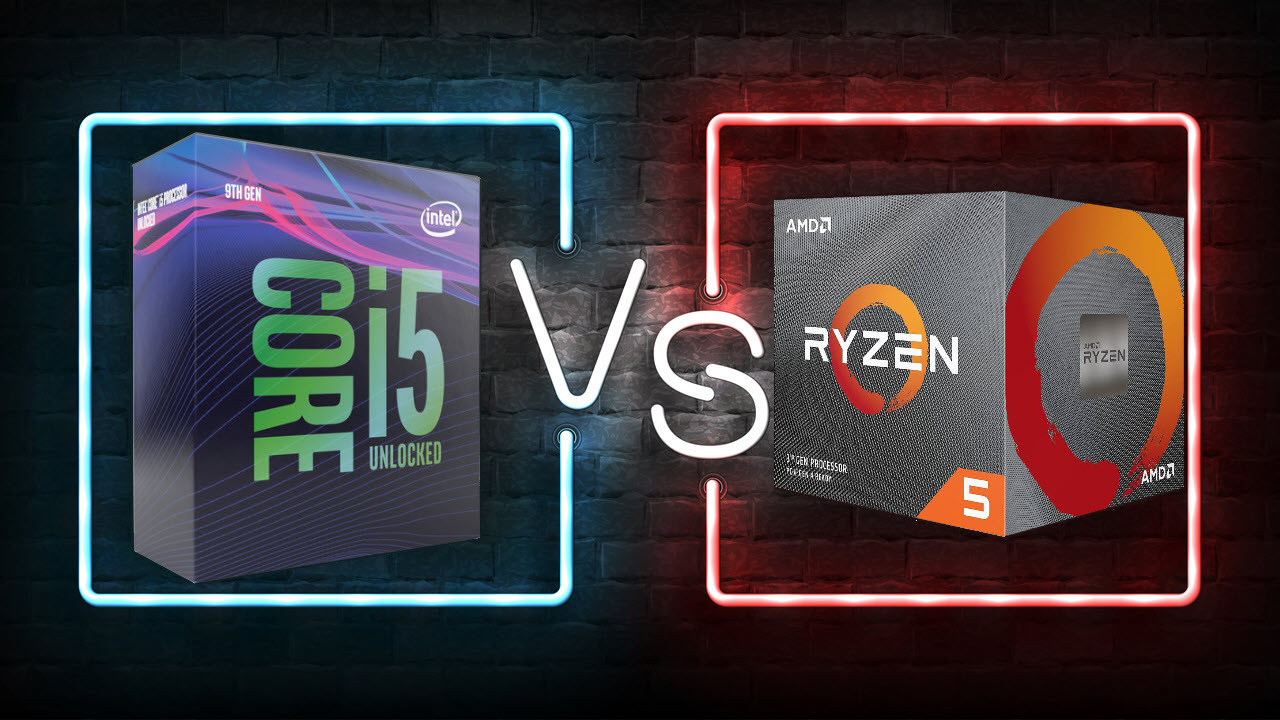AMD Ryzen 5 3600X vs Intel Core i5-9600K: Mid-Range Rumble
Competition is always great for consumers, so we should be grateful that AMD and Intel have been duking it out on the CPU front for decades. If only one chip maker existed without the other, we wouldn't have the quality of processors that we have today. For example, Intel's Core i5 desktop lineup was stuck on four cores for nearly a decade while AMD struggled to release a competitive product. But Ryzen changed things quickly, forcing Intel to respond with more cores and lower per-core pricing. Now enthusiasts and casual users alike can find great values at nearly every price point, but particularly in the mid-range market, as you can see in our CPU Benchmarks Hierarchy.
Intel's Core i5 and AMD's Ryzen 5 families are the biggest volume-movers in the mainstream desktop segment, and honestly, that's the most chip most gamers need. But then the eternal question arises: Who reigns supreme in the mid-range, AMD or Intel?
On one side, we have the Ryzen 5 3600X that from AMD's Matisse family. The Ryzen 5 3600X comes equipped with six cores and 12 threads. On the other side, we have the Core i5-9600K, which represents Intel's Coffee Lake lineup. The Core i5-9600K has six cores, but unlike its AMD rival, it's limited to six threads.
To help you pick one, we put the hexa-core processors from both chipmakers through a seven-round face-off, based on their features, overclockability, coolers, motherboards, performance, and value.
Looking for something in a different price/performance range? Head over to our best CPU page. And check out our CPU Benchmarks Hierarchy to see where these processors land in comparison to higher- and lower-end parts.
Features
The Ryzen 5 3600X is part of the Ryzen 3000-series lineup, so it inherits all of Ryzen's important attributes, like the Zen 2 microarchitecture and the 7nm FinFET process node from TSMC. The Ryzen 5 3600X combines its six-core, 12-thread configuration with a whopping 32MB L3 cache.
AMD assigns the Ryzen 5 3600X a 3.8 GHz base clock and 4.4 GHz single-core boost clock. The Ryzen 5 3600X boasts a dual-channel memory controller that supports DDR4-3200 memory modules natively, and it also exposes 16 PCIe 4.0 lanes to the user. Like other Zen 2 chips, the Ryzen 5 3600X doesn't come with integrated graphics, so you'll need to use a dedicated graphics card of some form.
Get Tom's Hardware's best news and in-depth reviews, straight to your inbox.
| Header Cell - Column 0 | Intel Core i5-9600K | AMD Ryzen 5 3600X |
|---|---|---|
| Architecture | Coffee Lake | Zen 2 |
| Socket | LGA1151 | AM4 |
| Cores / Threads | 6 / 6 | 6 / 12 |
| Base Frequency (GHz) | 3.7 | 3.8 |
| Boost Frequency (GHz) | 4.6 | 4.4 |
| L3 Cache | 9MB | 32MB |
| Process | 14nm | 7nm |
| TDP | 95W | 95W |
| Memory Speed | DDR4-2666 | DDR4-3200 |
| Memory Controller | Dual-Channel | Dual-Channel |
| Integrated Graphics | Intel UHD Graphics 630 | N/A |
| Recommended Customer Pricing | $262 - $263 | $249 |
The Core i5-9600K, which is based on the Coffee Lake microarchitecture, hails from Intel's 14nm manufacturing process. While it does have six cores, the Core i5-9600K doesn't come with Hyper-Threading, which limits the chip to six threads. The processor also has 9MB of L3 cache.
The Core i5-9600K checks in with a 3.7 GHz base clock and a 4.6 GHz single-core boost clock. Intel has implemented the UHD Graphics 630 iGPU inside the Core i5-9600K as well as a dual-channel memory controller with DDR4-2933 support.
Winner: AMD. The Ryzen 5 3600X comes a much more generous featureset. The hexa-core processor offers more threads, L3 cache and support for the PCIe 4.0 interface and DDR4-3200 memory sticks. It's only weak point is the absence of an iGPU, so the conversation stops there if you aren't planning on using a discrete graphics card.
Motherboard Options
The Ryzen 5 3600X has great backward compatibility with prior AM4 motherboards. With the adequate firmware, the Ryzen 5 3600X will work on AMD 300-and 400-series motherboards. However, building a system around a pre-X570 motherboard means you lose out on PCIe 4.0 functionality. X570 motherboards, which start at $145, are the only PCIe 4.0 option at the moment until motherboard manufacturers start rolling out the budget 500-series motherboards.
The Core i5-9600K drops into the LGA1151 socket. Unlike the Ryzen 5 3600, the Core i5-9600K won't work on motherboards that aren't built around the Intel 300-series chipset. Intel offers multiple chipsets for different needs, but assuming you want to pair the Core i5-9600K with a capable enthusiast board, the starting price for Z370 and Z390 motherboards begins around $115.
If you're interested in future-proofing, investing in a LGA1151 motherboard isn't a wise decision right now. Reports point to Intel introducing the a new LGA1200 socket for upcoming Comet Lake desktop chips, so the LGA1151 socket already has one foot inside the retirement home. AMD, on the other hand, says it will support the AM4 socket until 2020, meaning we could see one more wave of processors on the socket before the chipmaker transitions to a new one.
Winner: AMD. X570 motherboards cost a little bit more than Z370 and Z390 motherboards due to support for new features, like PCIe 4.0. This won't change until more budget-friendly AMD 500-series chipsets come to market. With Intel on the brink of abandoning the LGA1151 socket, it surely isn't worth it to buy an Intel 300-series motherboard if you're interested in future-proofing.
Overclocking Potential
The Ryzen 5 3600X has a 4.4 GHz single-core boost clock and the all-core frequency is around 200 MHz to 300 MHz lower the single-core value. Based on our experiences with the Ryzen 5 3600X, you're better off letting AMD's Precision Boost Overdrive (PBO) feature do its job. Overclocking all cores to a static frequency increases performance in multi-threaded workloads, but you sacrifice lightly-threaded performance.
Intel advertises the Core i5-9600K with a 4.6 GHz single-core clock. However, the hexa-core processor comes equipped with a 4.3 GHz all-core boost clock. We managed to overclock our sample to 5 GHz on all six cores with a 1.36V Vcore and auto Load-Line Calibration (LLC) settings. The overclock bumps the chip's power consumption up to 179W under heavy load.
Winner: Intel. Intel's overclocking superiority is hard to beat. If you plan to do a fair bit of overclocking, you'll have a lot of fun with the Core i5-9600K.
Cooling Solutions
The Ryzen 5 3600X and Core i5-9600K feature a 95W TDP (thermal design power). Intel measures the TDP at the base clock, so the Core i5-9600K's power draw is slightly higher. Our tests show that a stock Core i5-9600K can pull up to 119W with extreme workloads.
It shouldn't be hard to find an air or liquid CPU cooler to keep the Ryzen 5 3600X or Core i5-9600K's operating temperatures under control. If you're not overclocking, even budget CPU coolers are more than adequate. In the Ryzen 5 3600X's case, AMD includes the Wraith Spire so you don't have to spend a dime on an aftermarket CPU cooler.
Winner: AMD. The Ryzen 5 3600X has slightly lower power consumption. As a result, it's easier and cheaper to find a CPU cooler that can cool the processor. Nevertheless, the added value lies in the inclusion of the Wraith Spire CPU cooler, meaning you save a few bucks to put towards other components in your system.
Gaming Performance
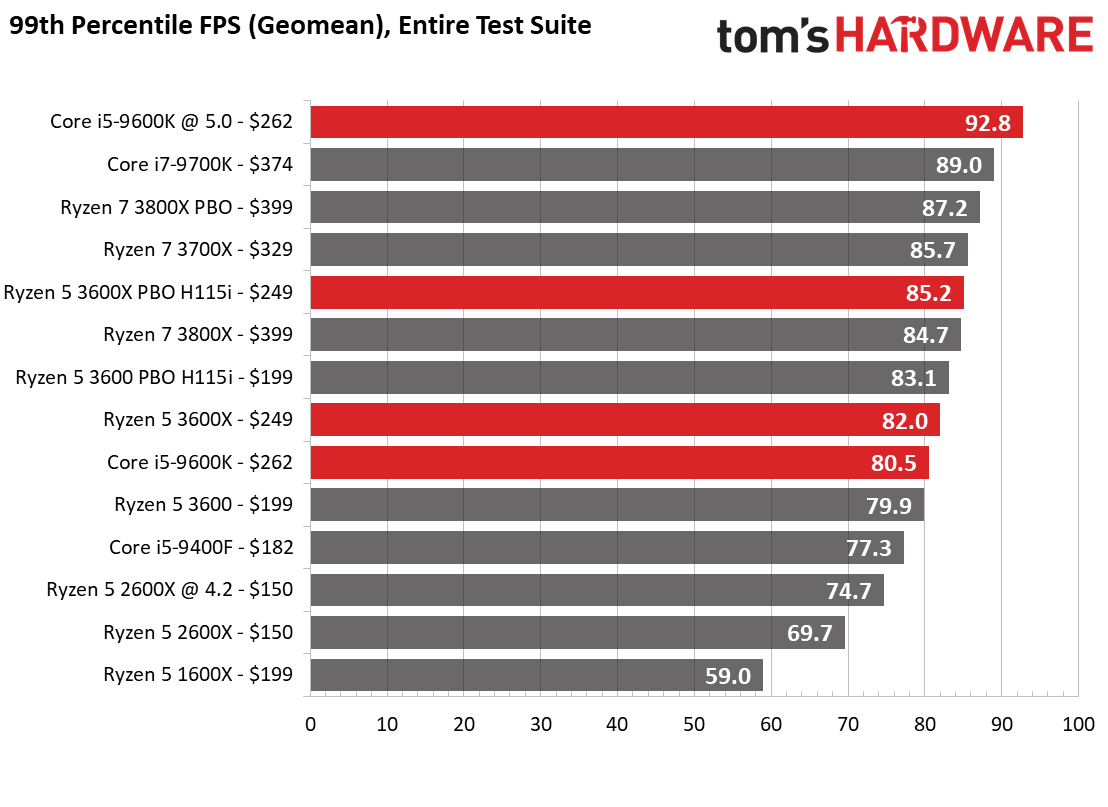
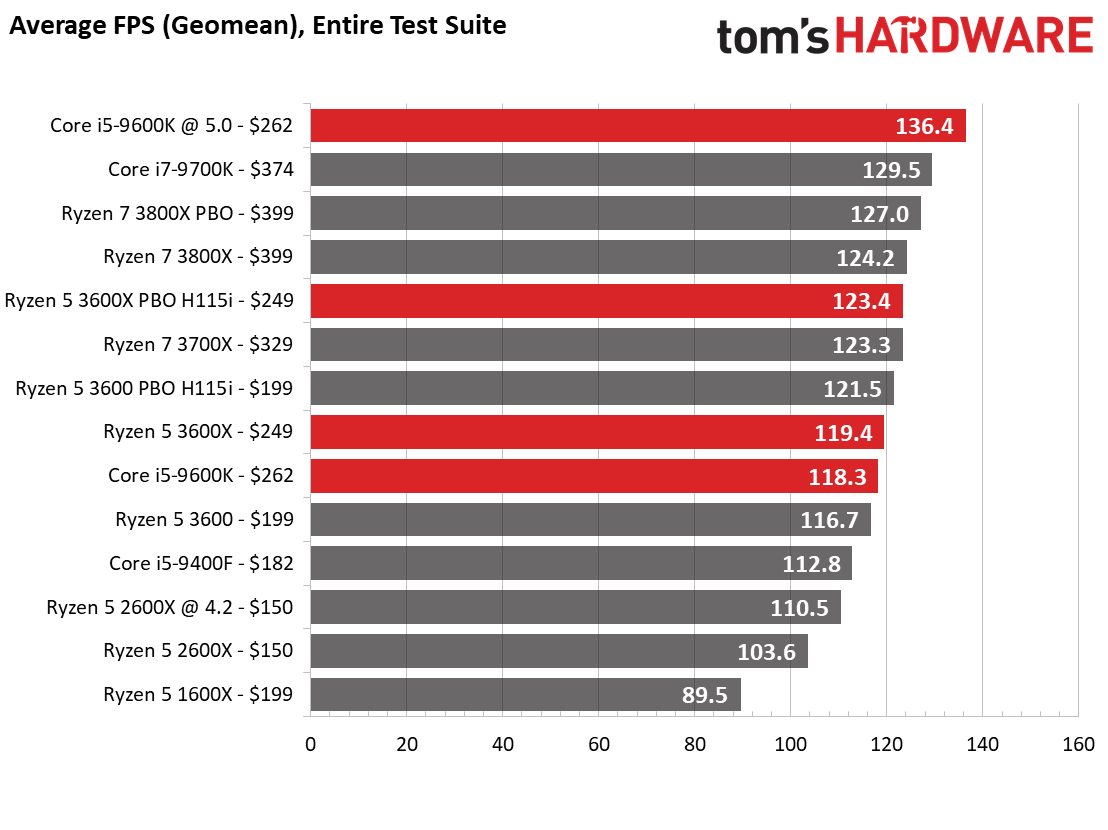
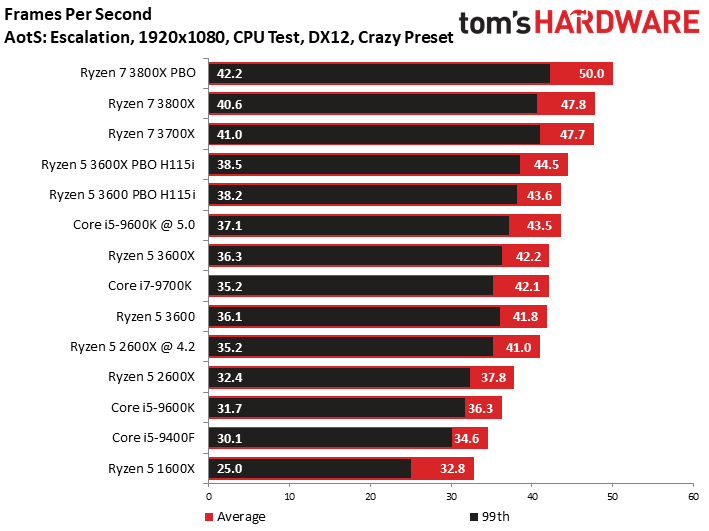
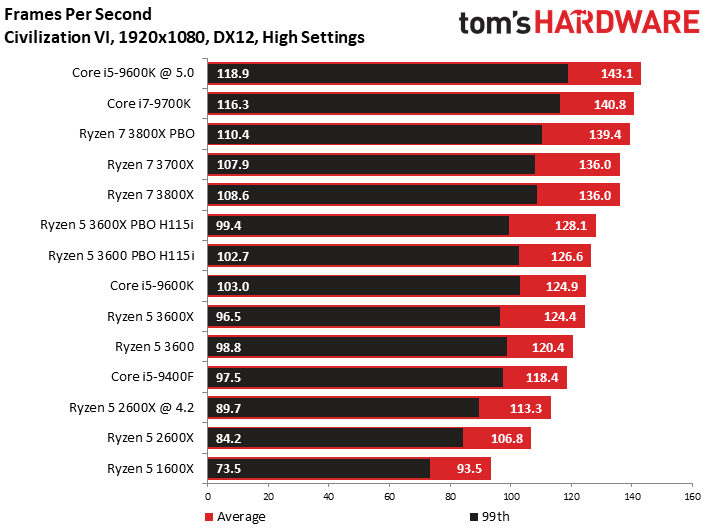
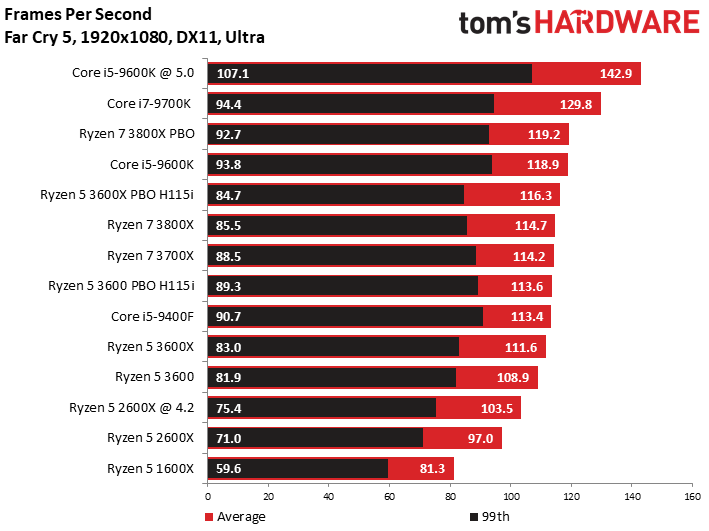
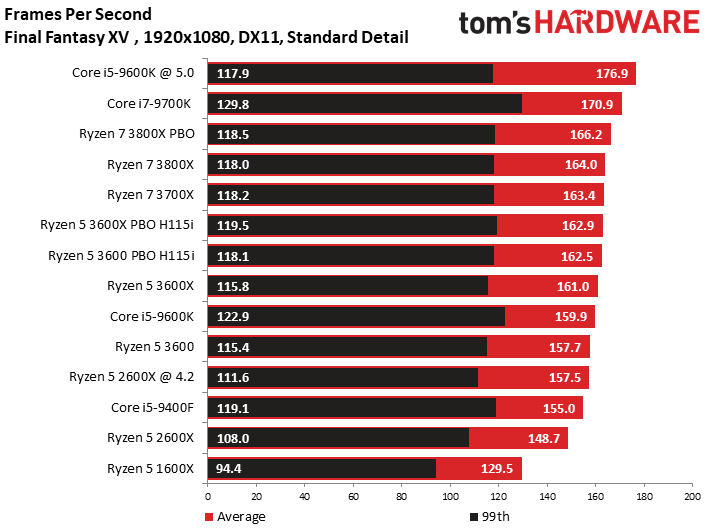
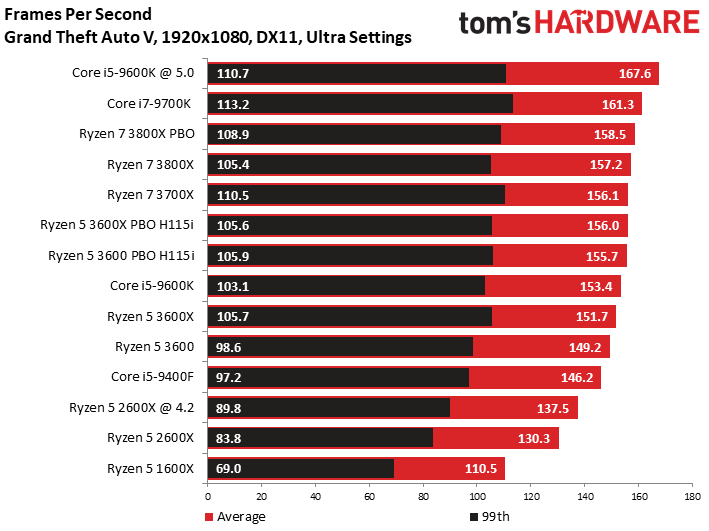
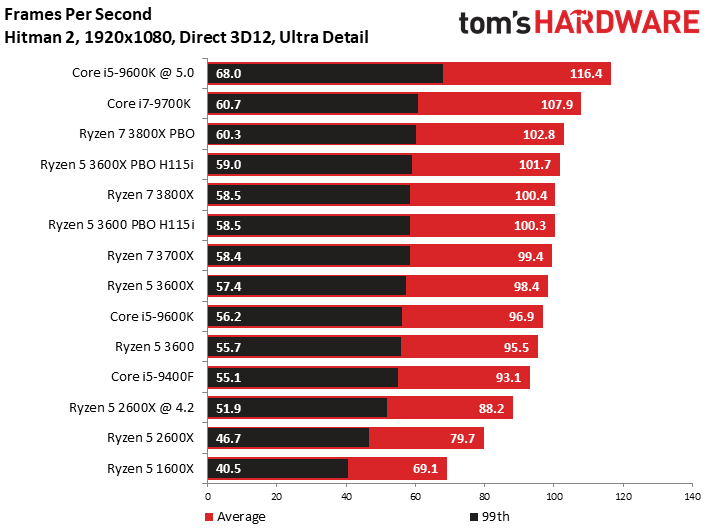
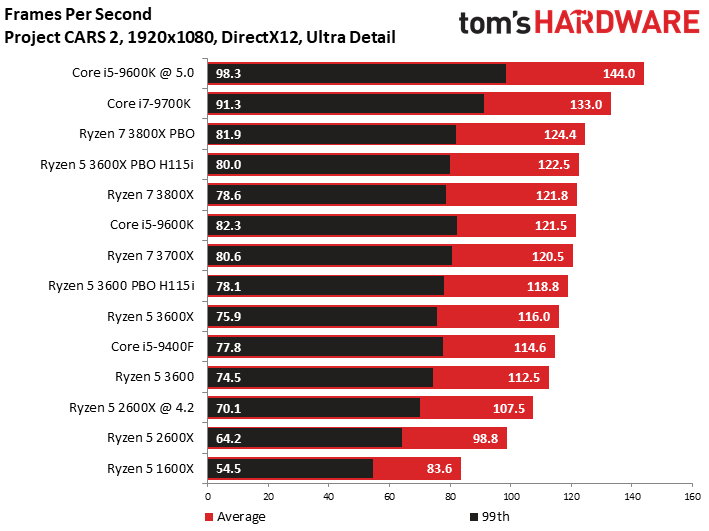
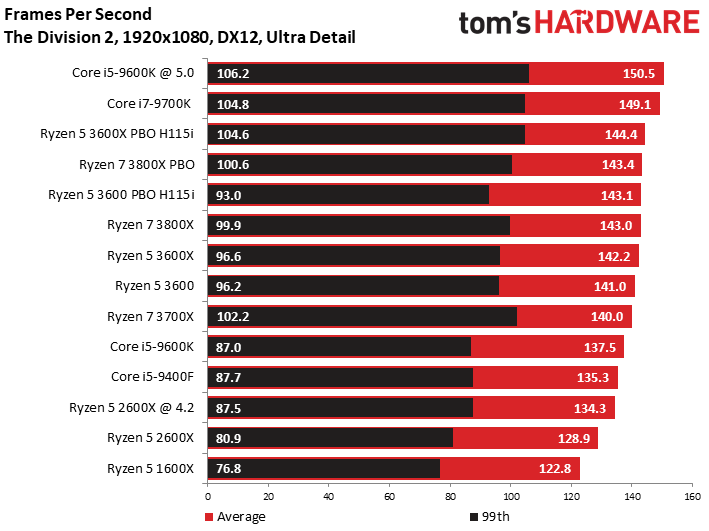
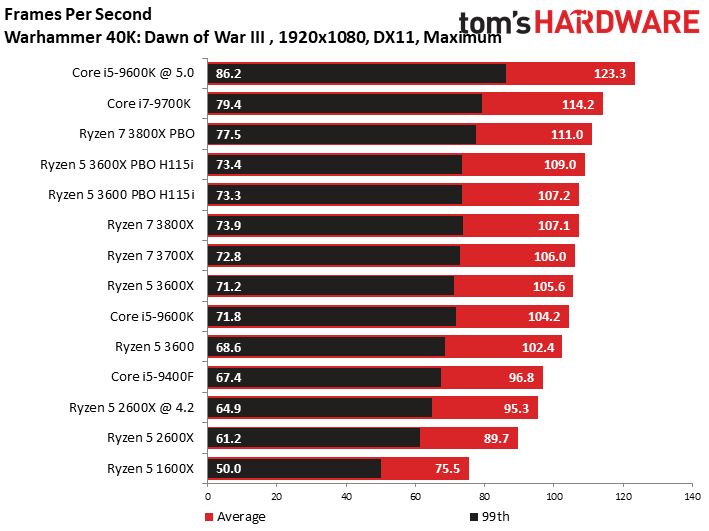
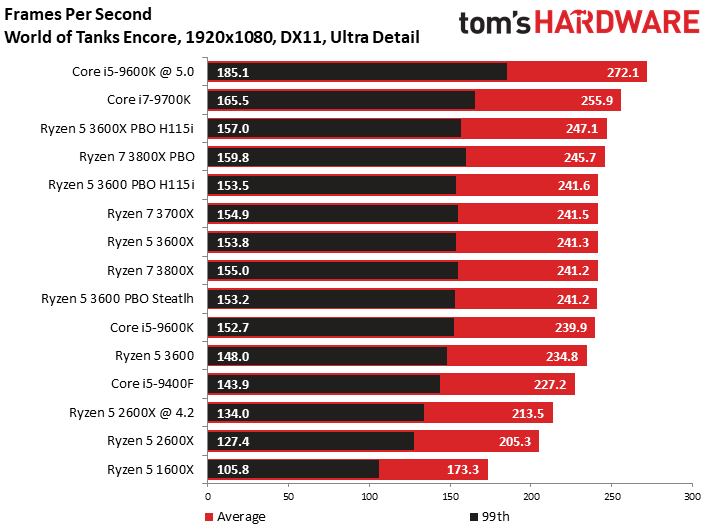
We include information about our test systems at the bottom of the page.
It was a very close fight between the Ryzen 5 3600X and the Core i5-9600K in our gaming test suite. The Ryzen 5 3600X delivered more performance than the Core i5-9600K in six of the 10 games that we tested, but some of the margins were slim. That's important because we test at the FHD resolution with a leading graphics card, while most systems in this price band will come with lesser cards. Also, bumping up the resolution would push the bottleneck back to the GPU, making CPU performance less of a factor. All of this is to say that these results would be nearly identical if a graphics bottleneck comes into play.
Winner: AMD. Normally, Intel chips are better at gaming. On this occasion, the Ryzen 5 3600X turned the table on the Core i5-9600K. AMD's hexa-core chip is a surprisingly nimble gaming processor.
Productivity Performance
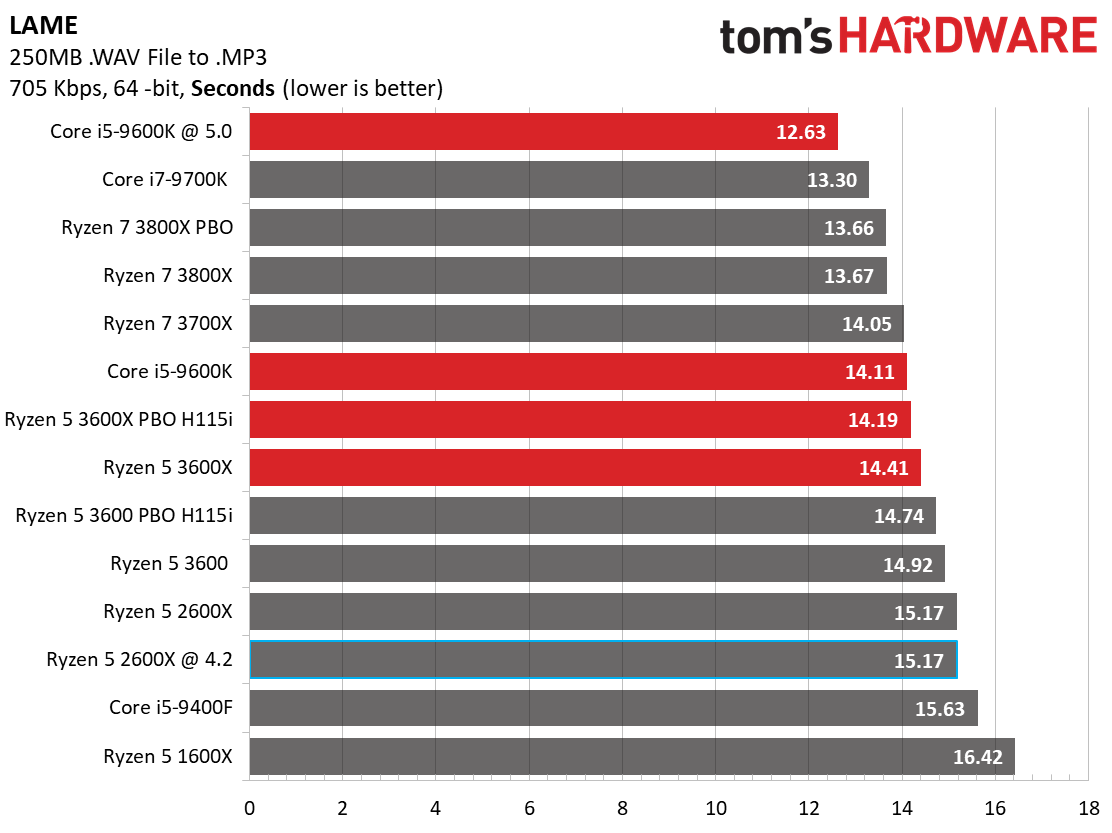
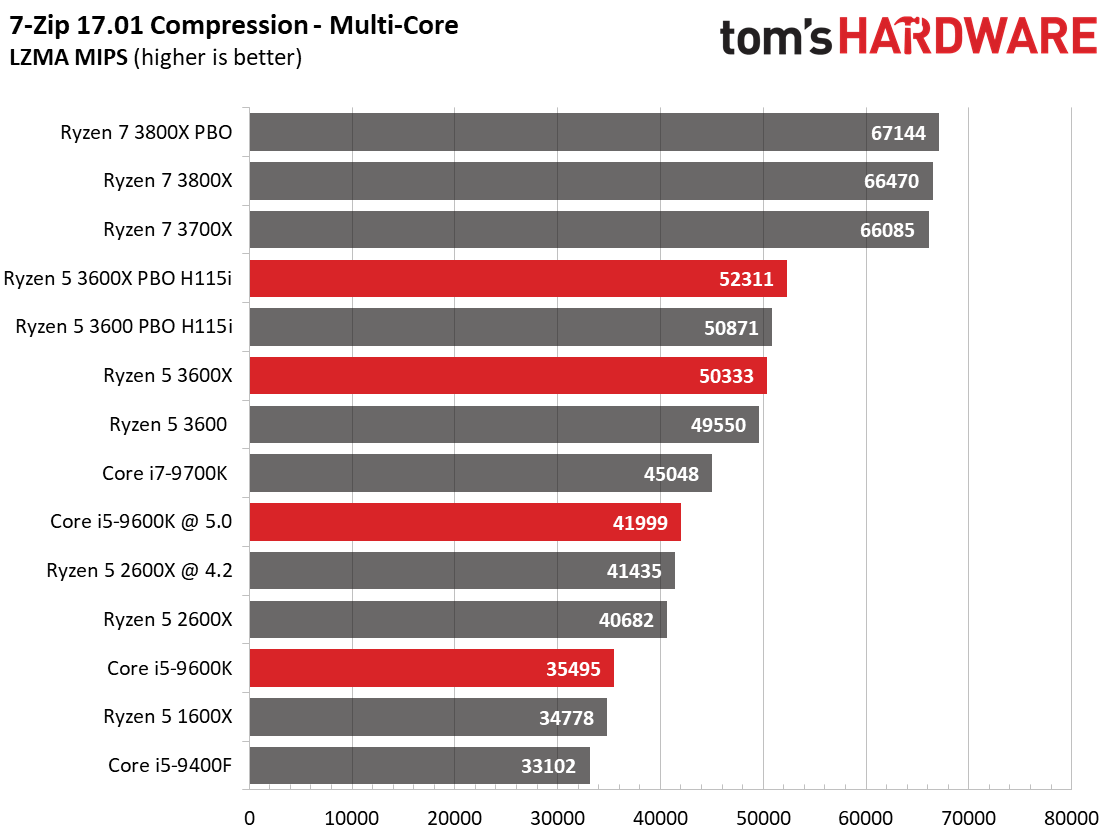
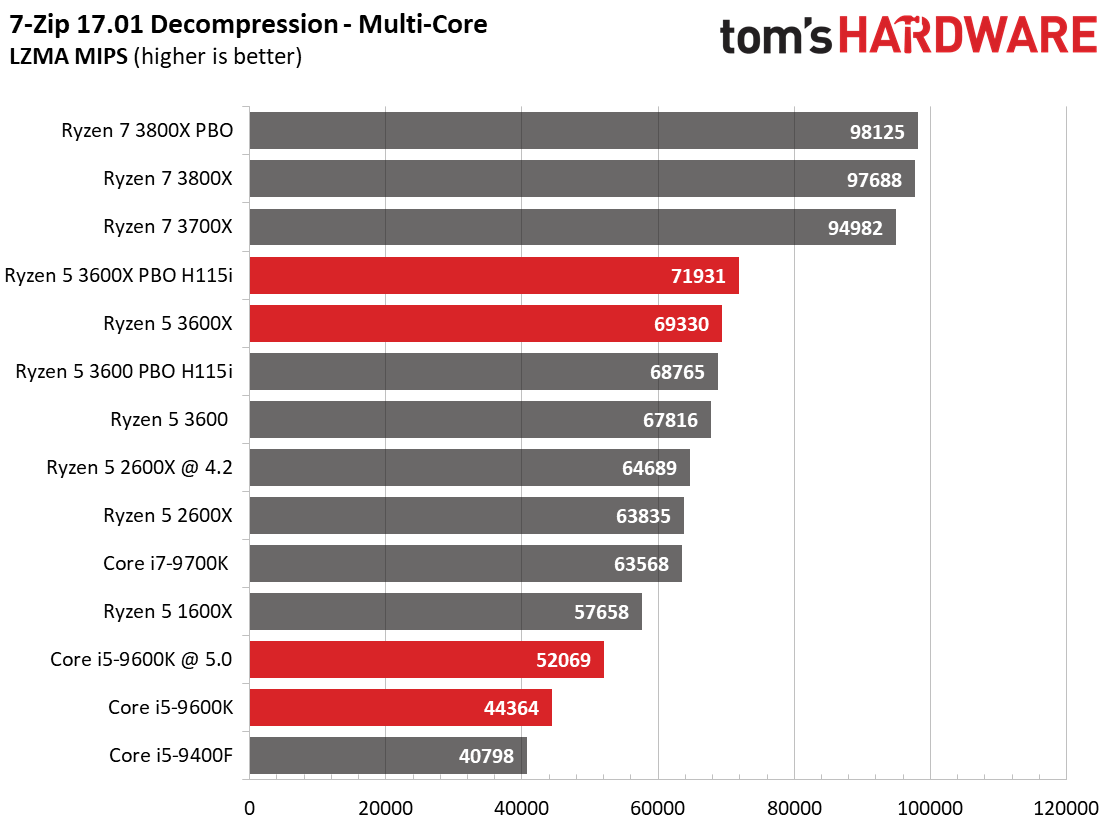
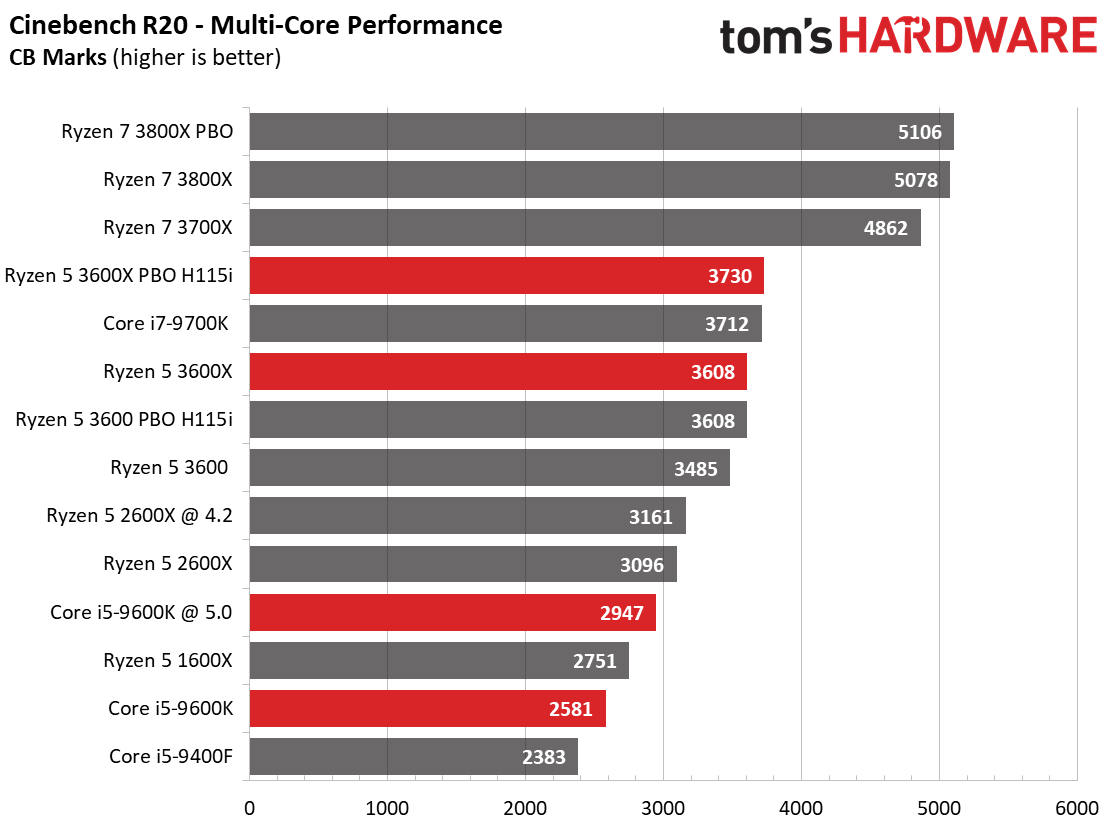
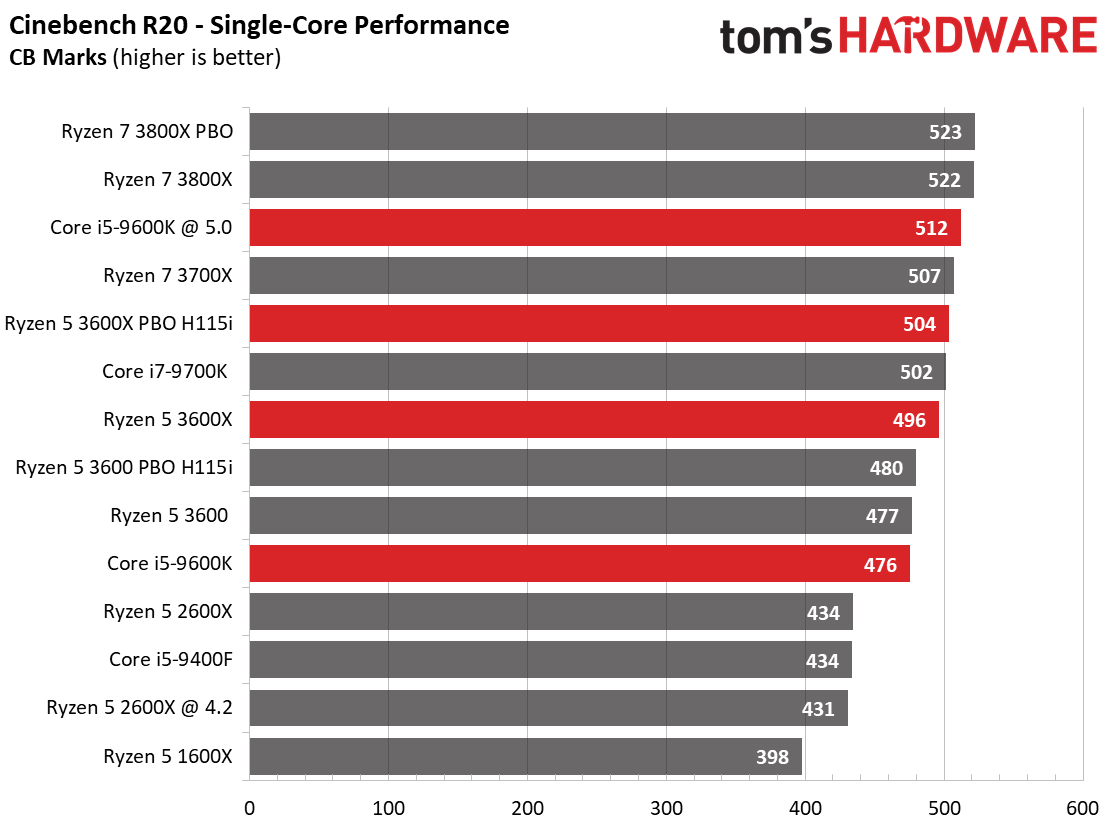
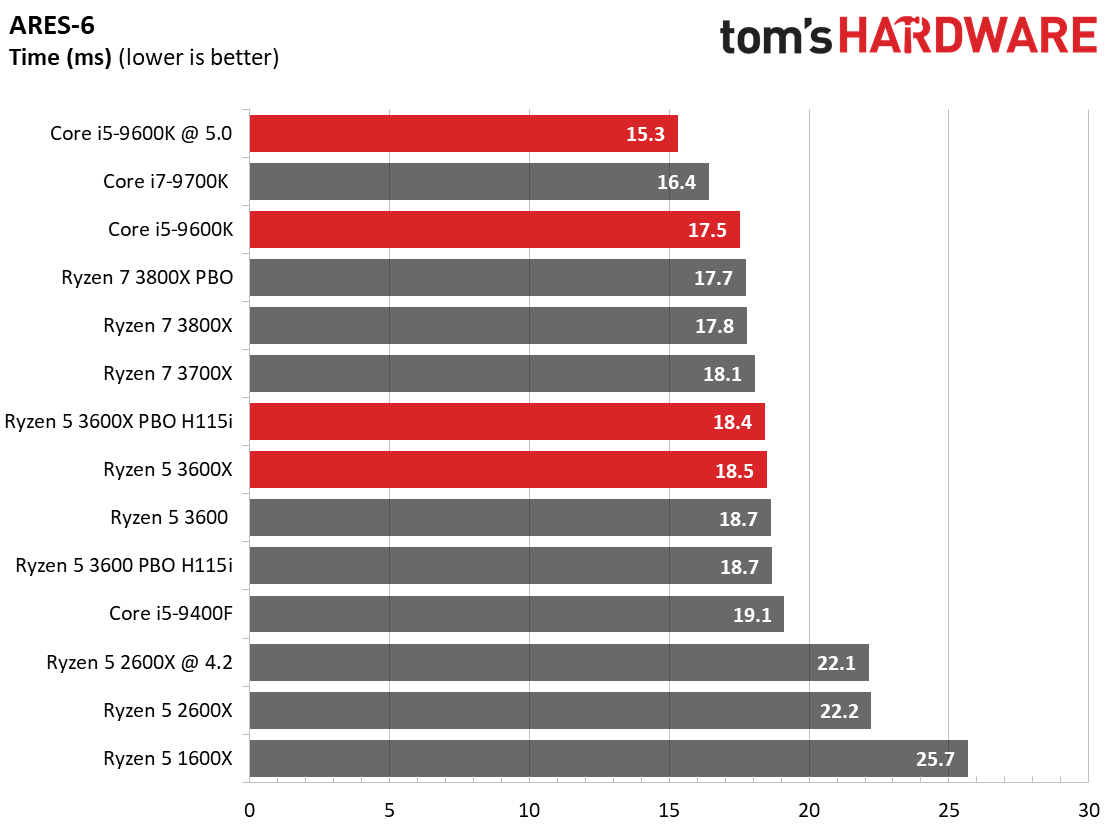
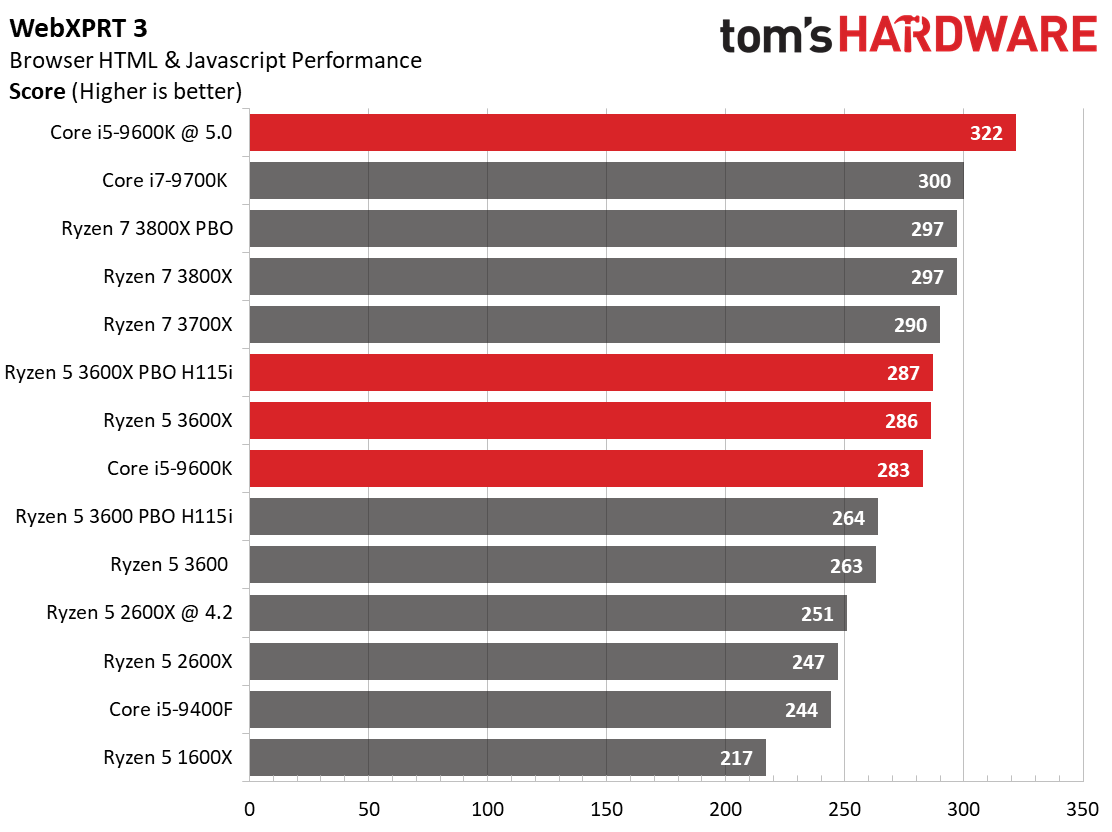
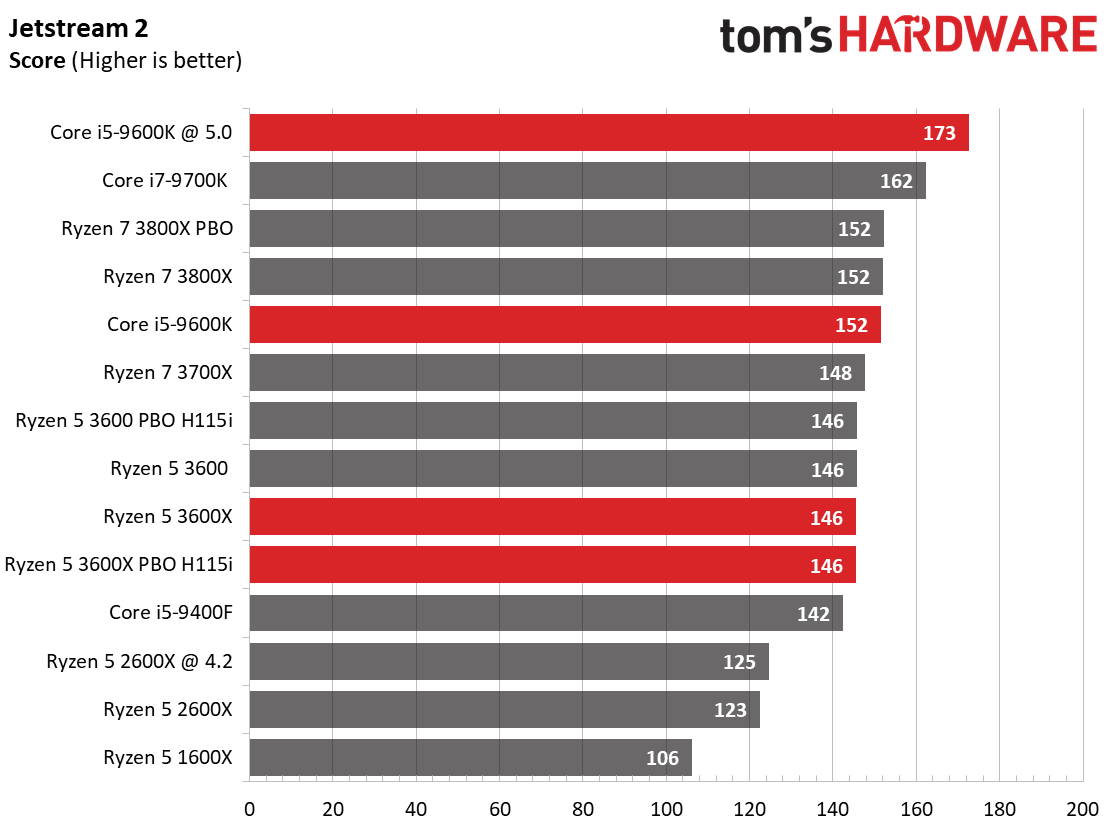
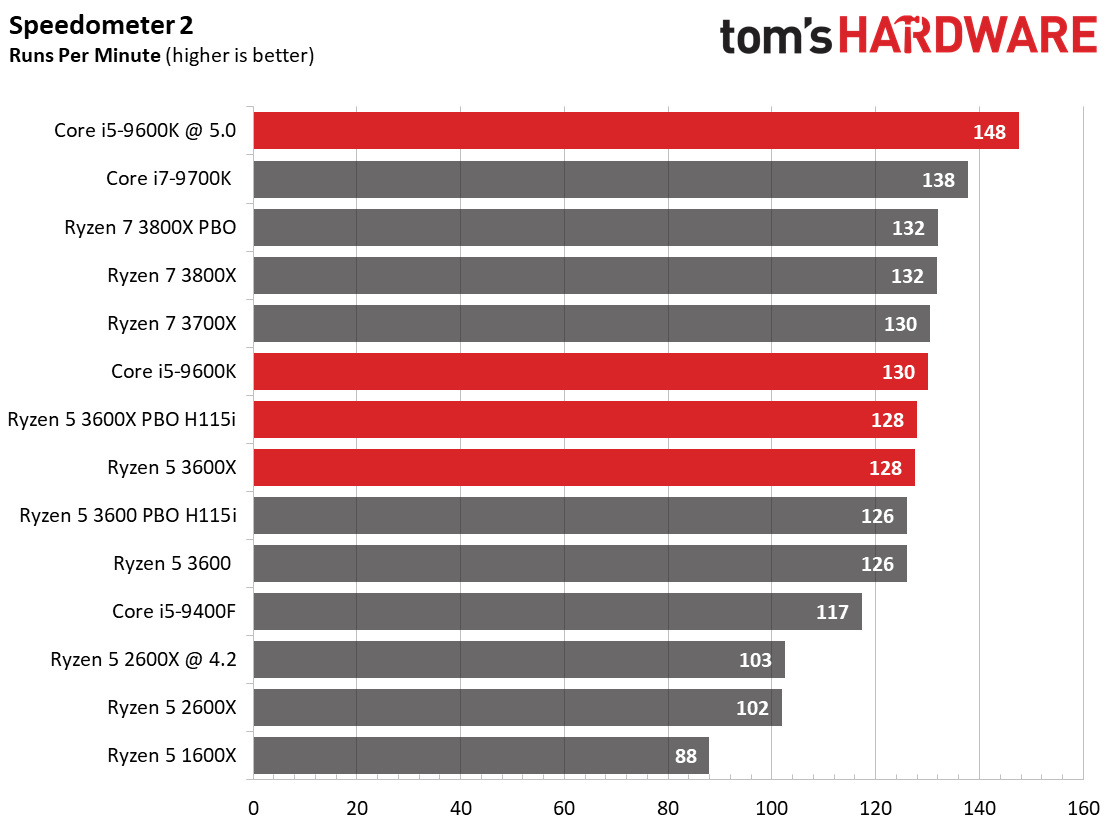
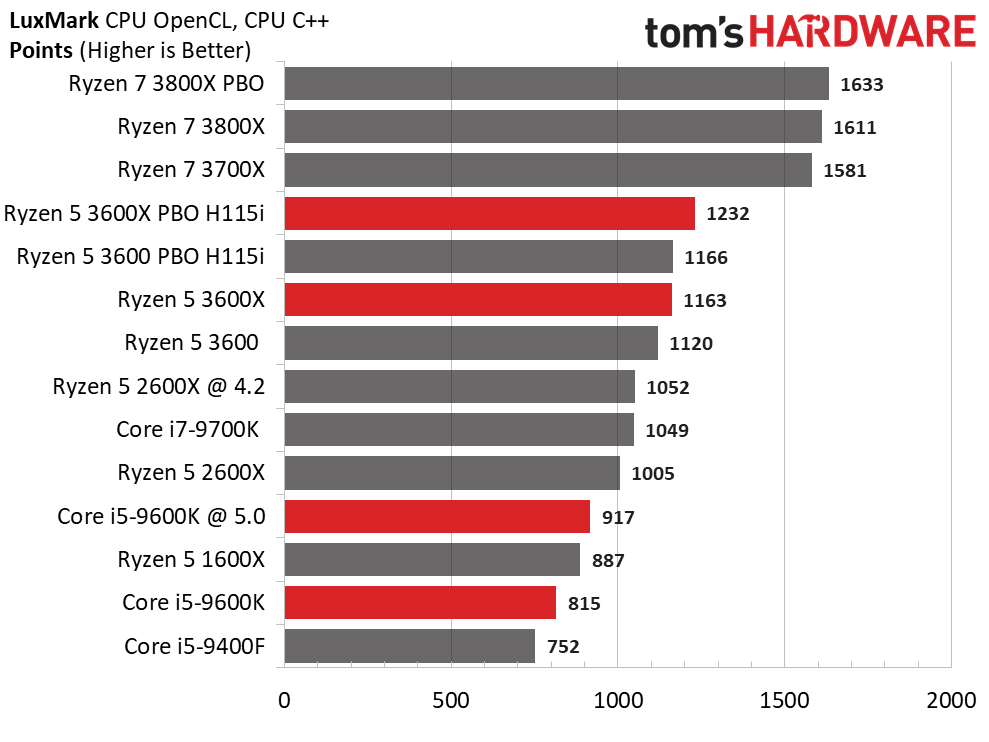

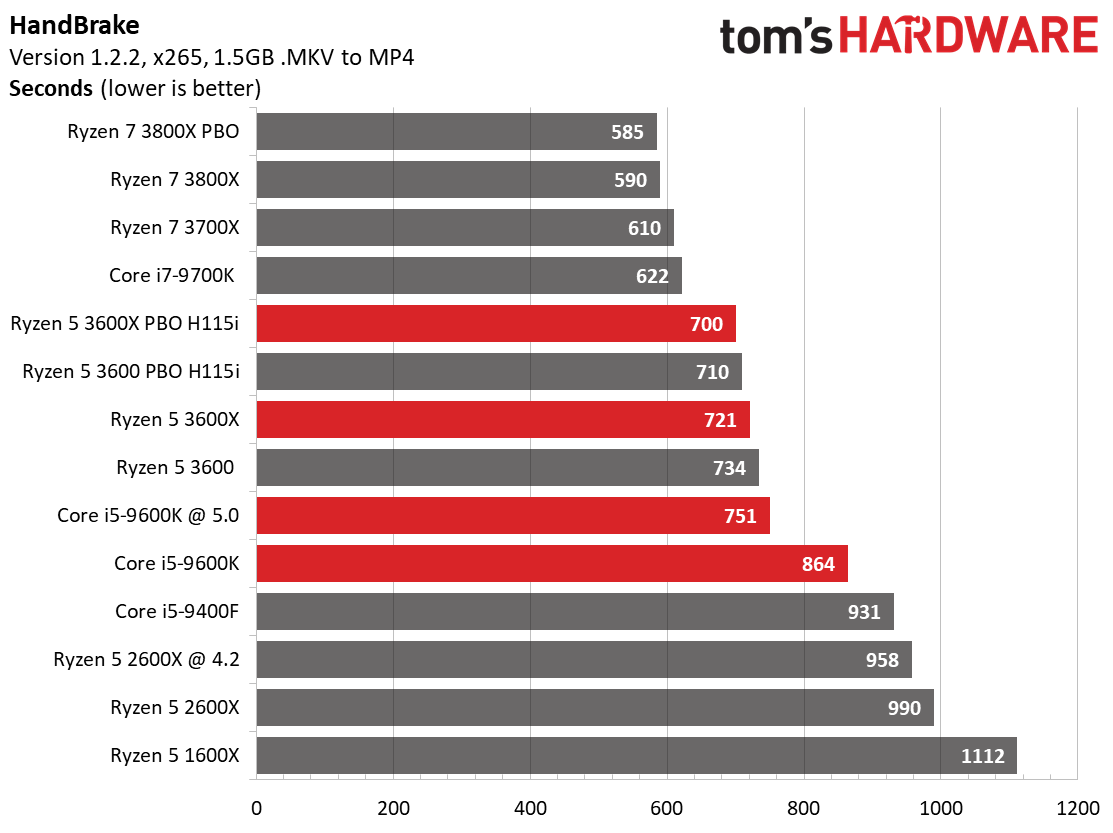
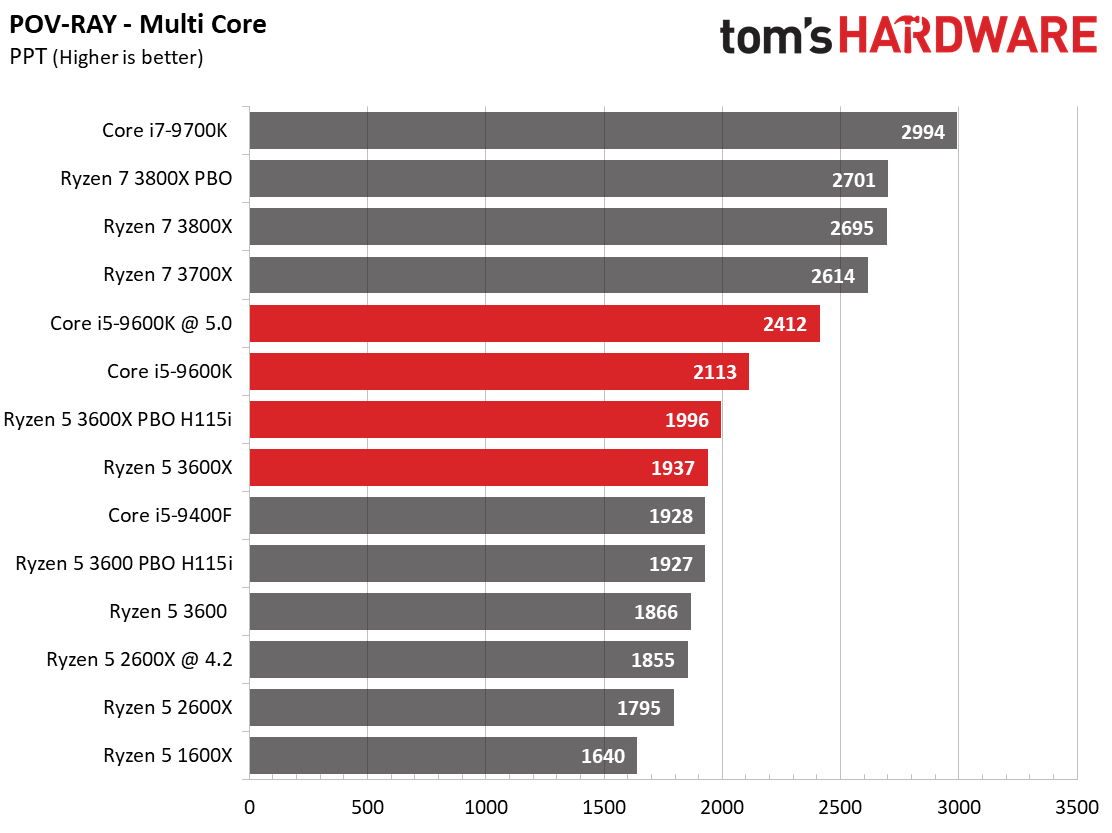
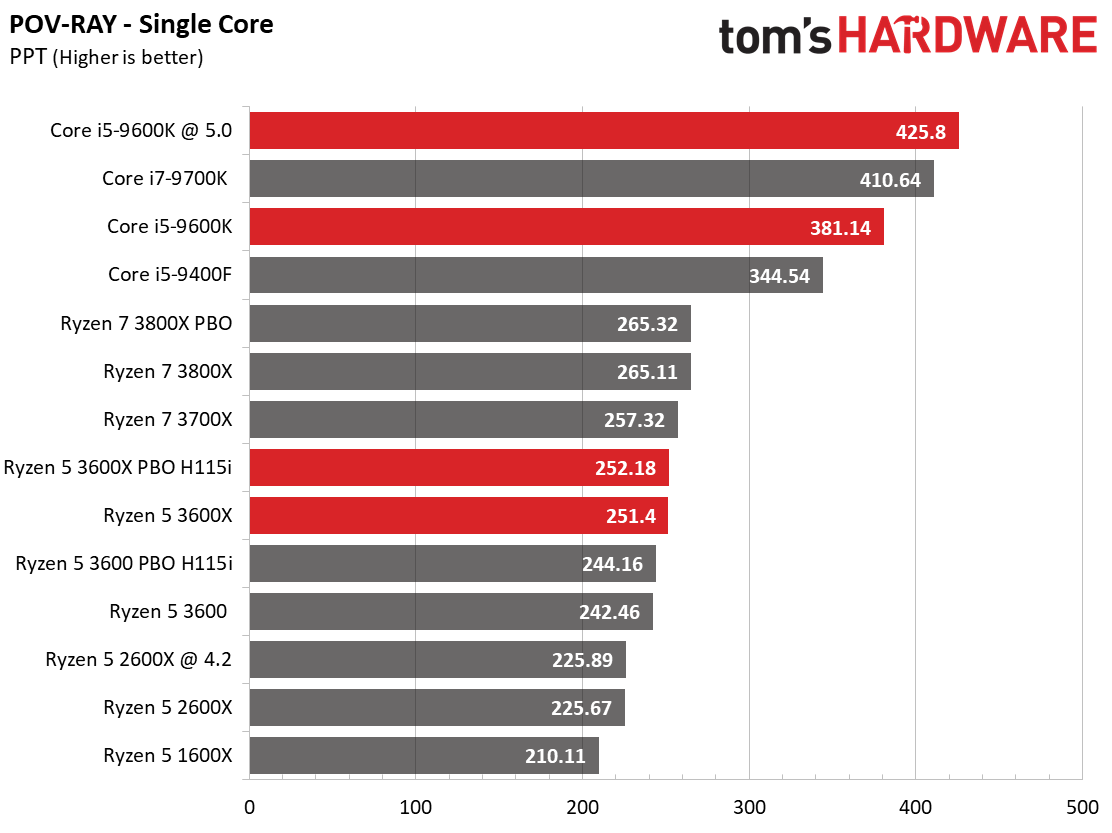
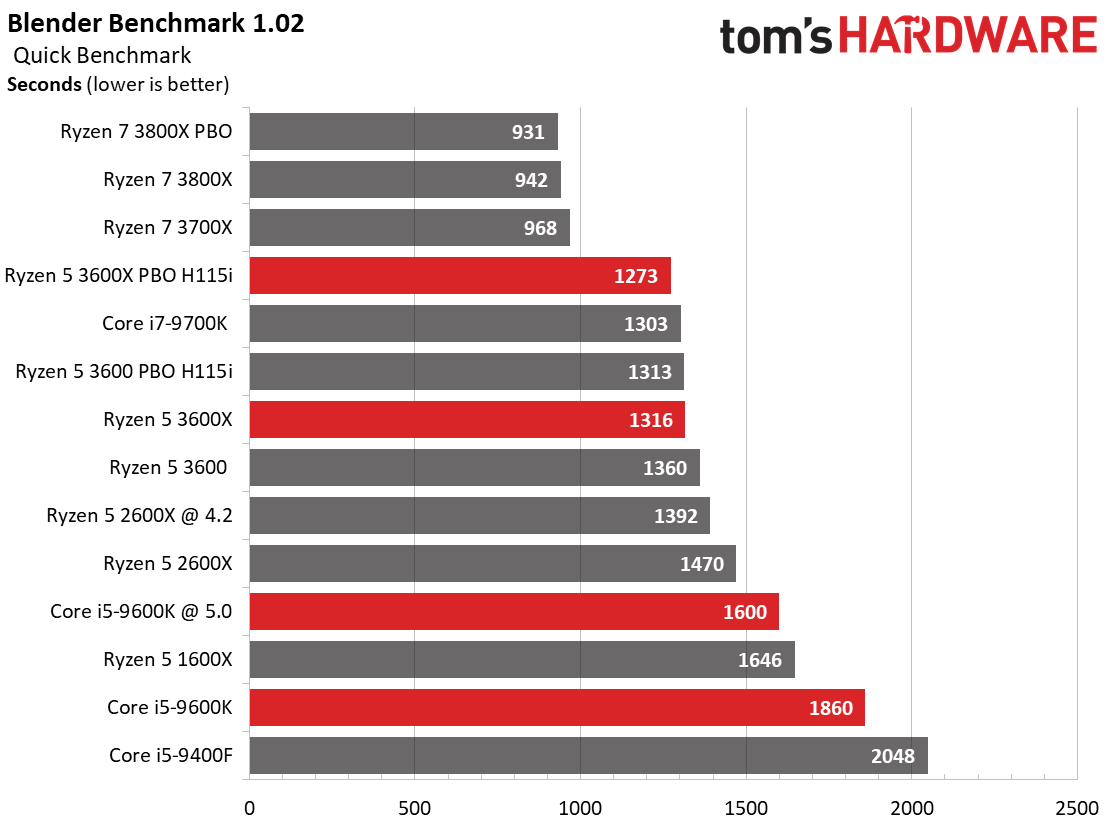
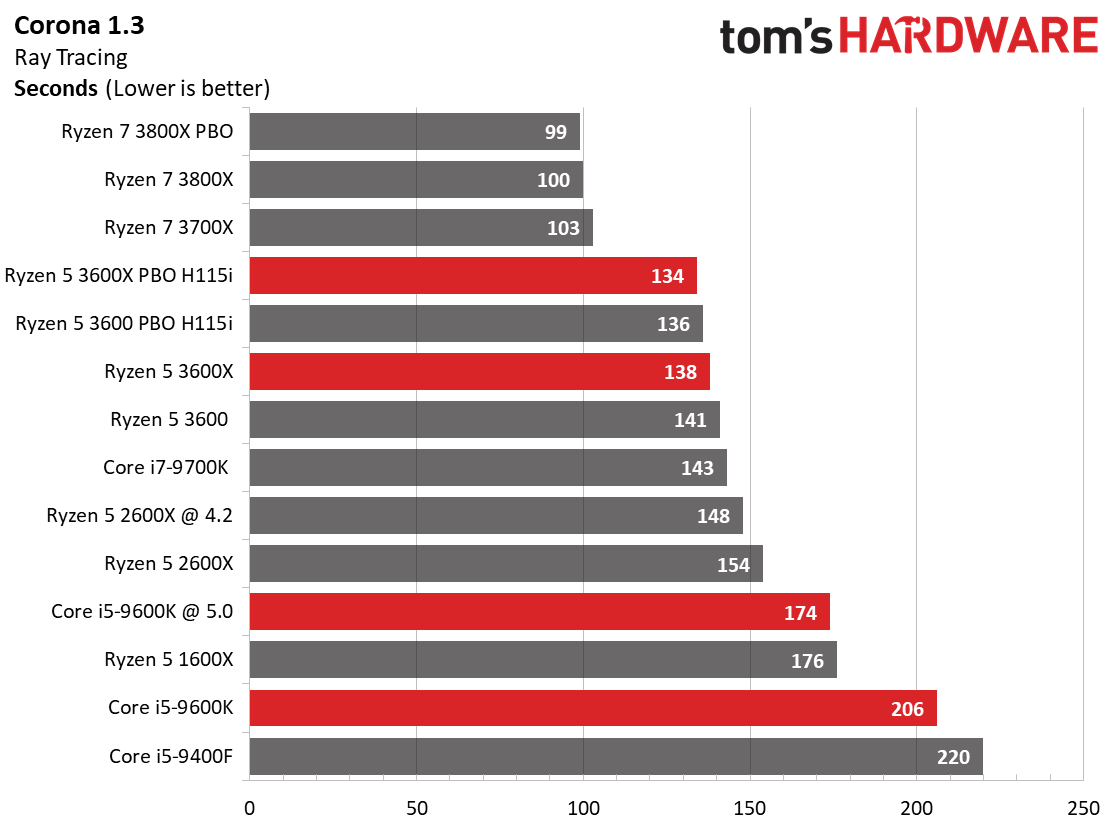
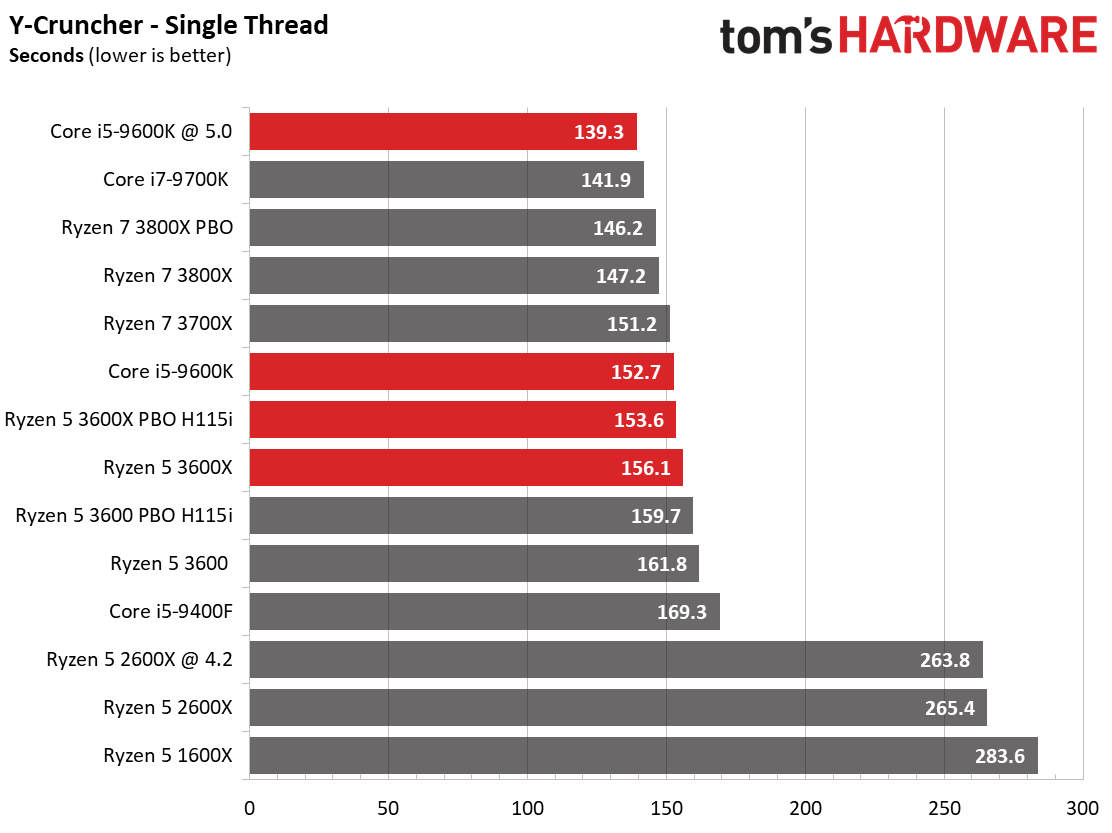
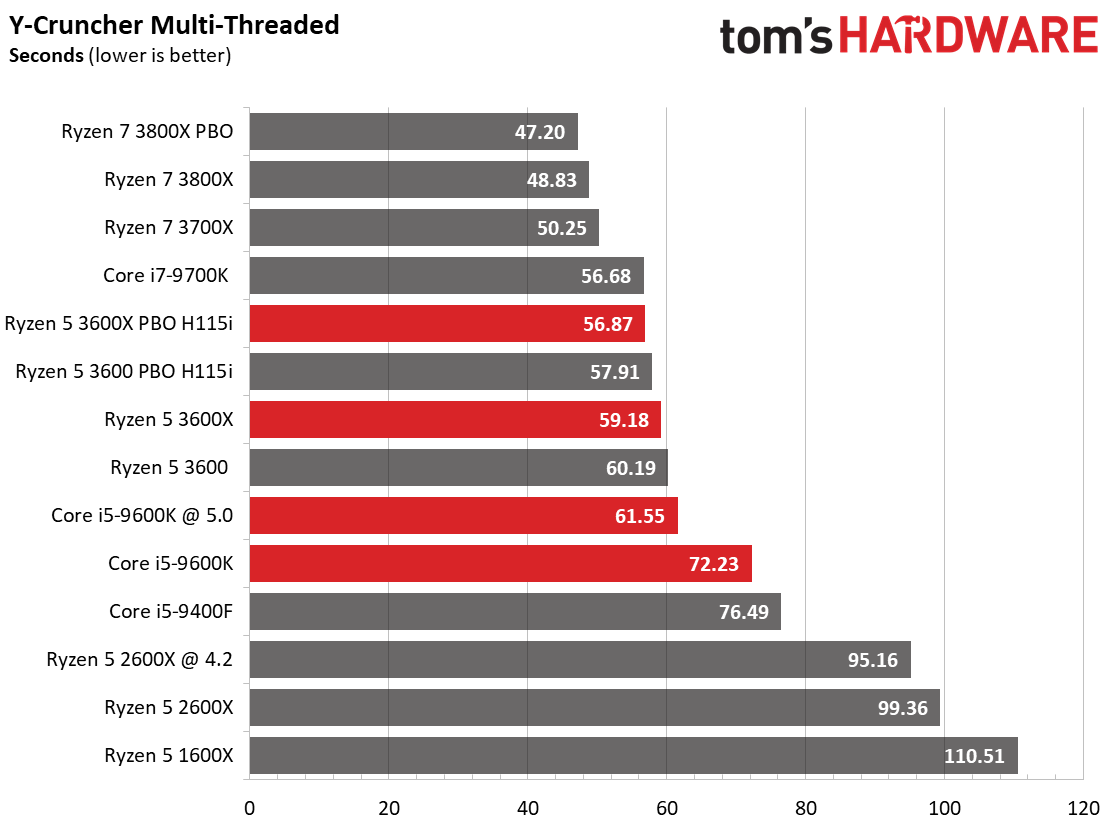
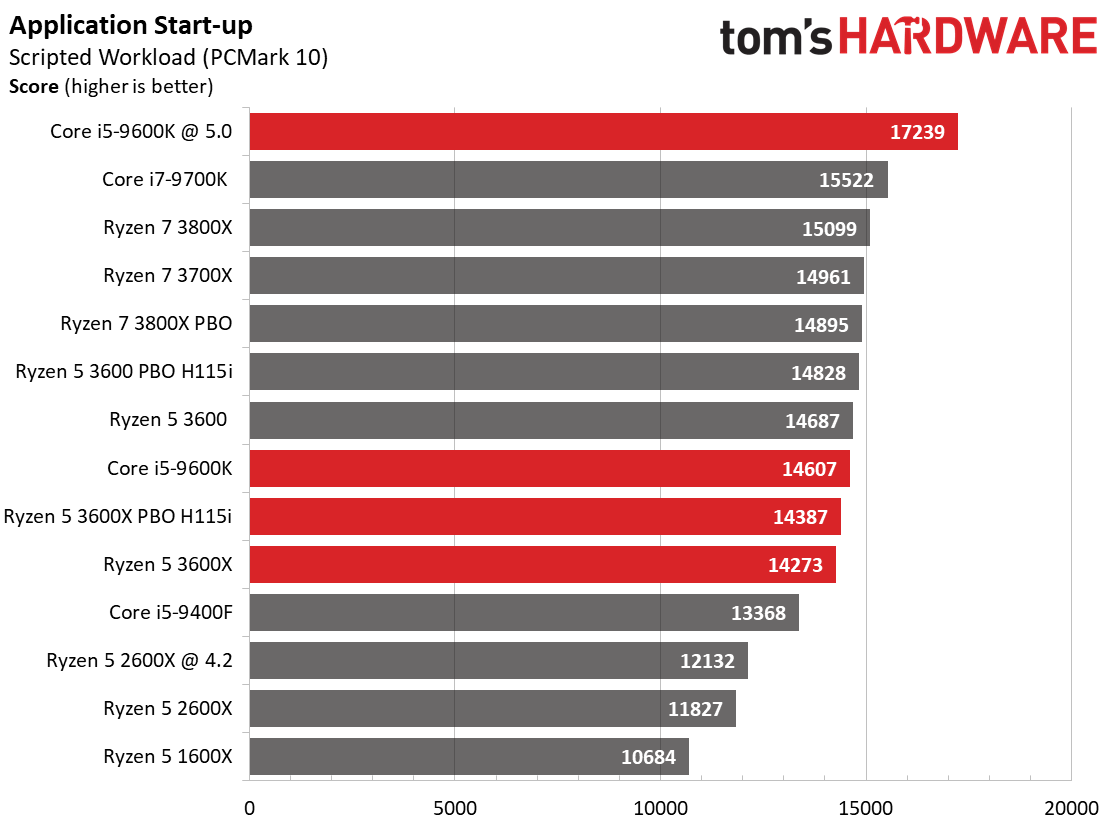
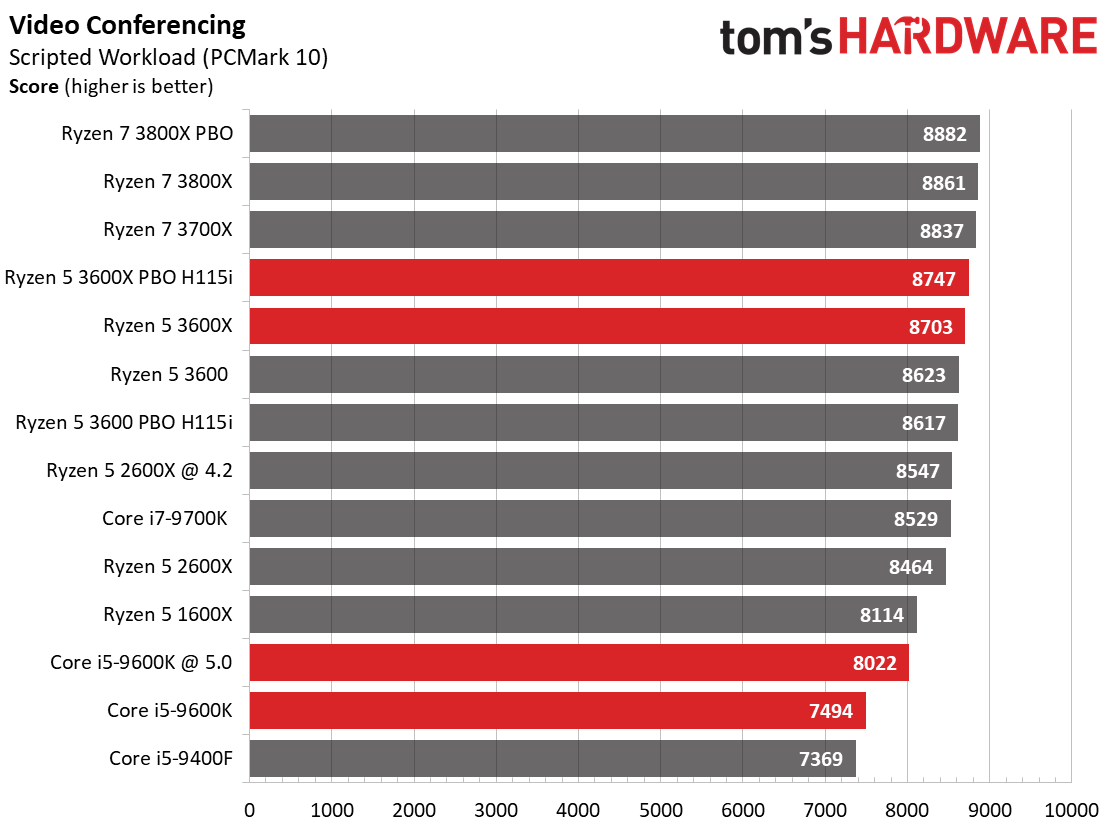
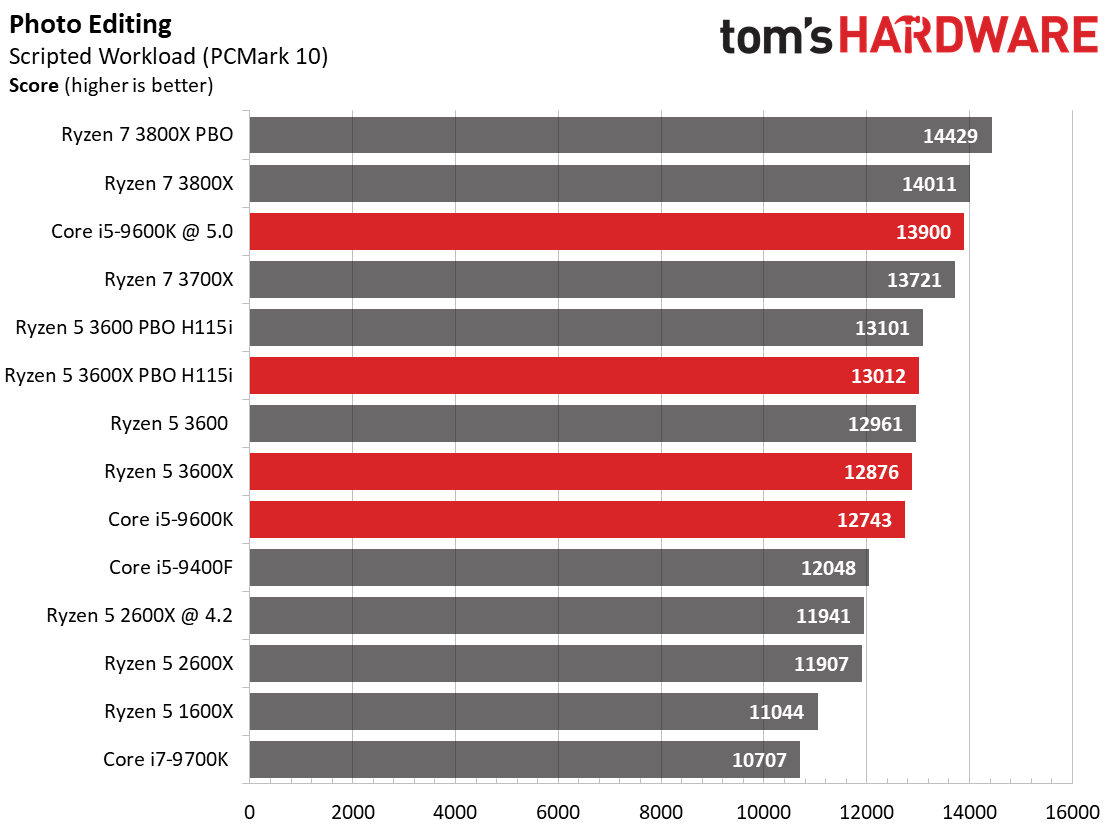
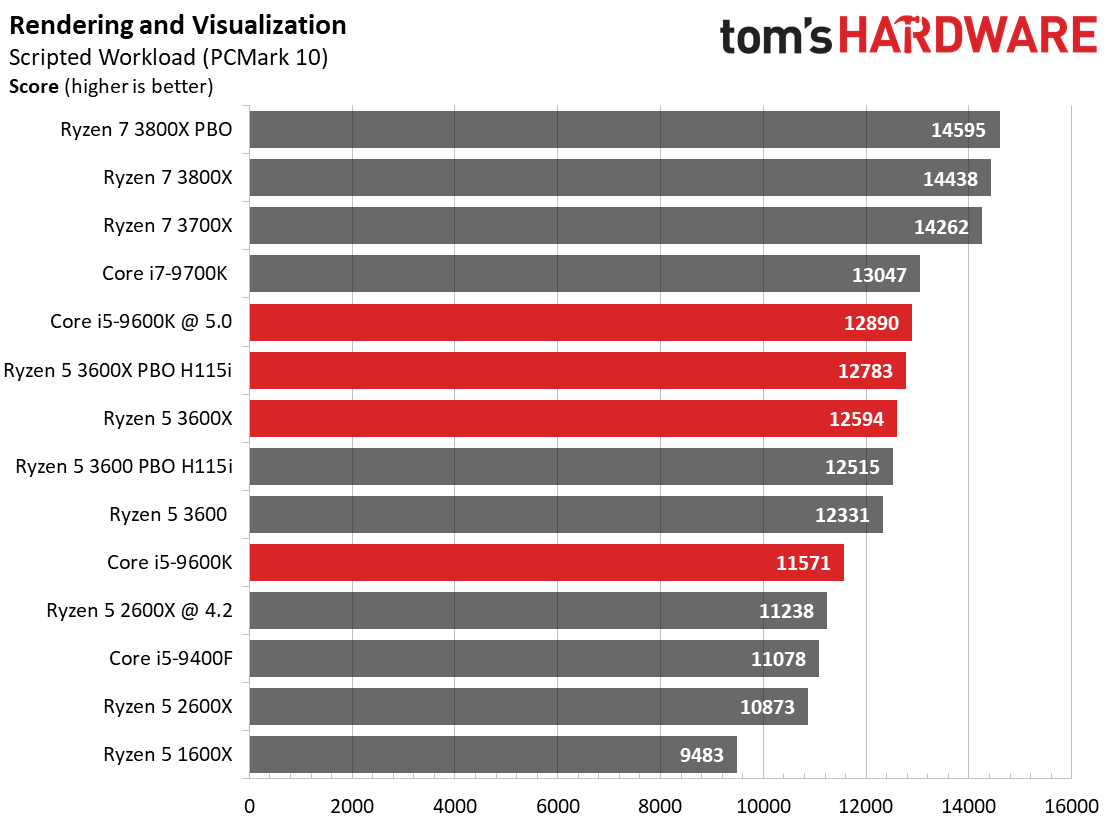
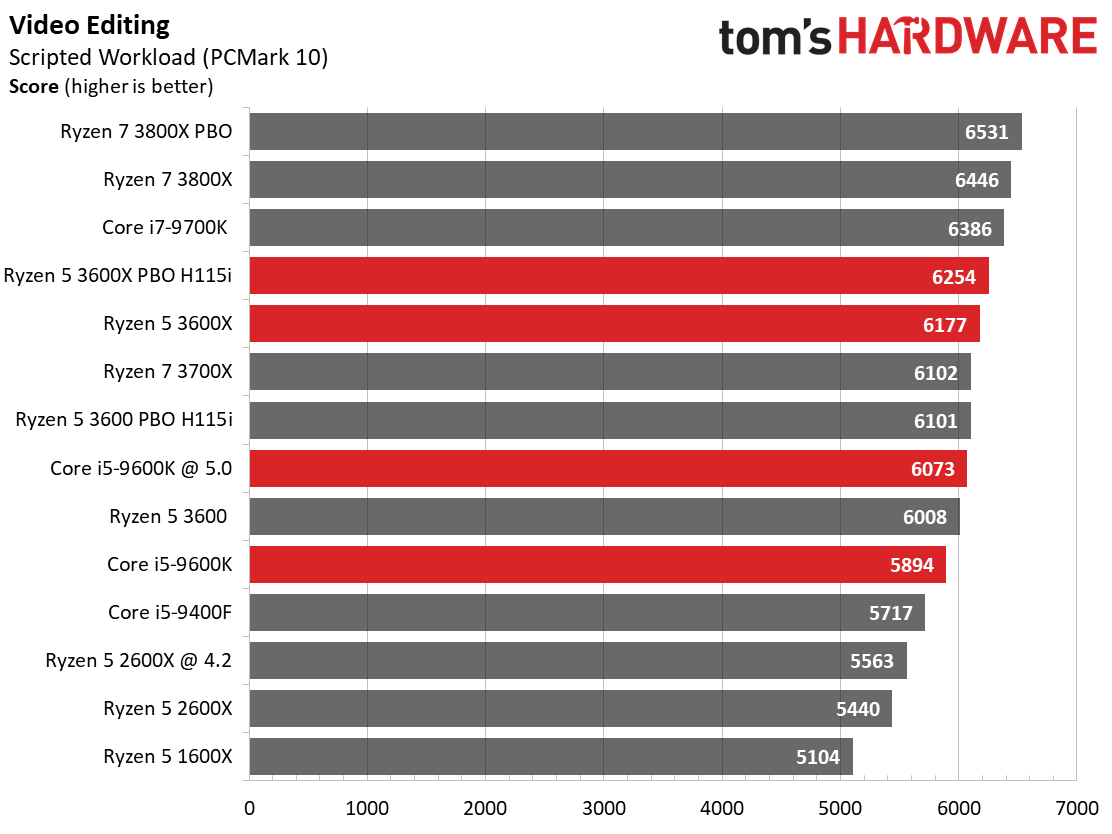
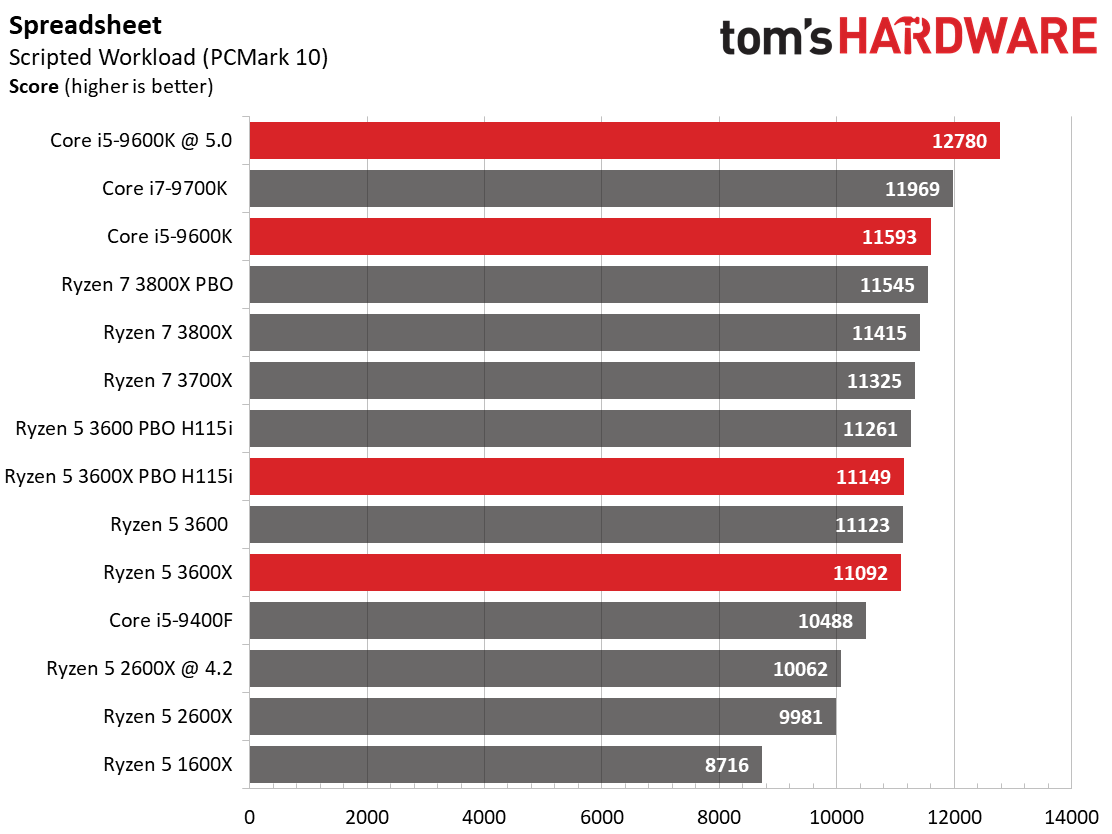
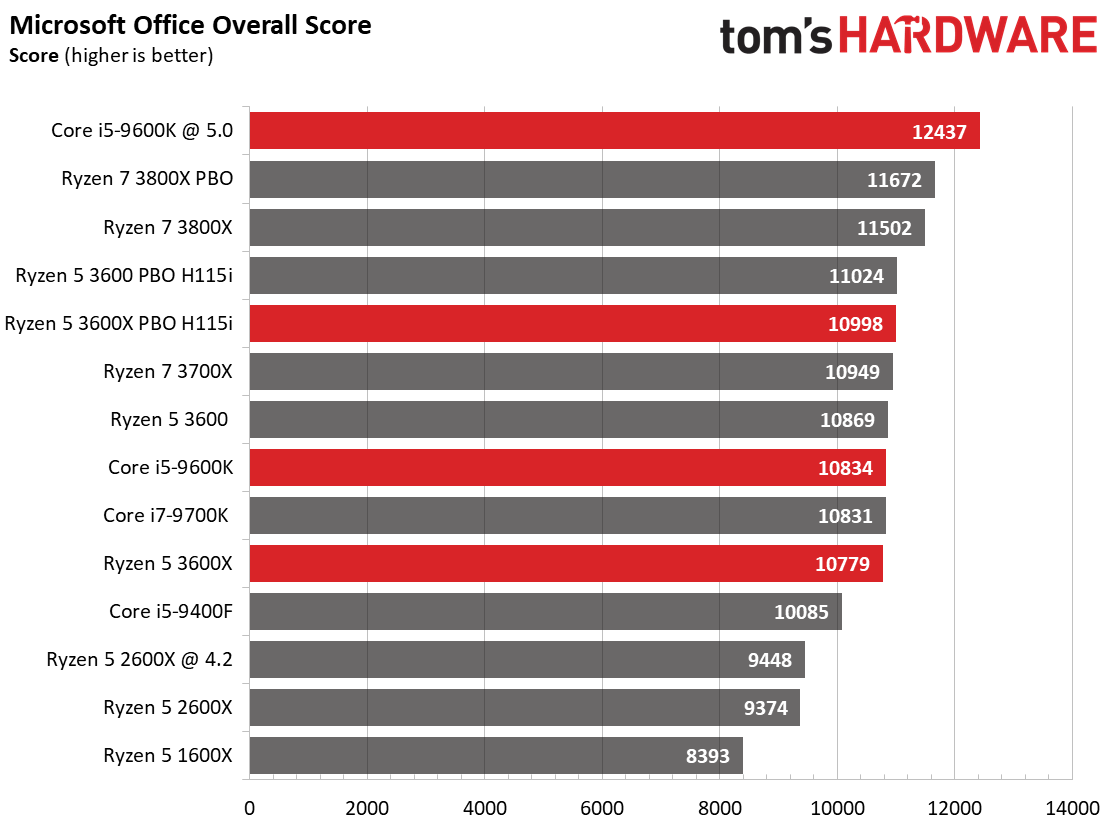
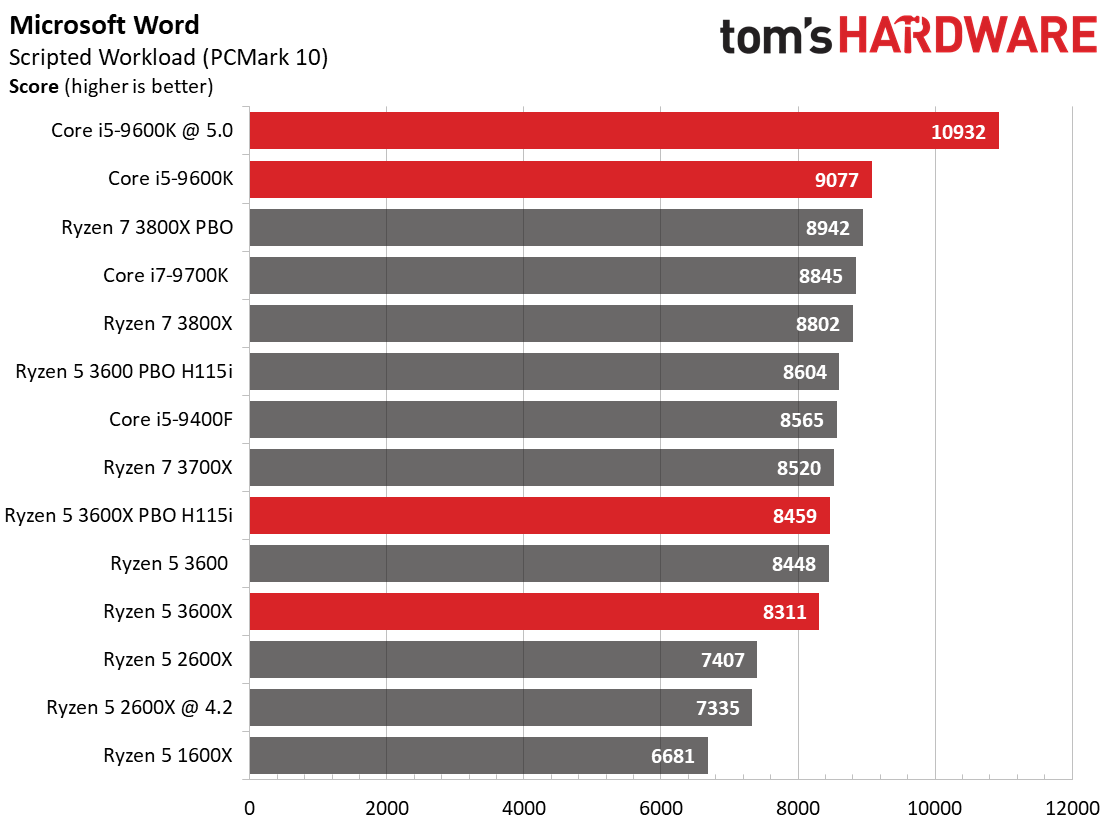
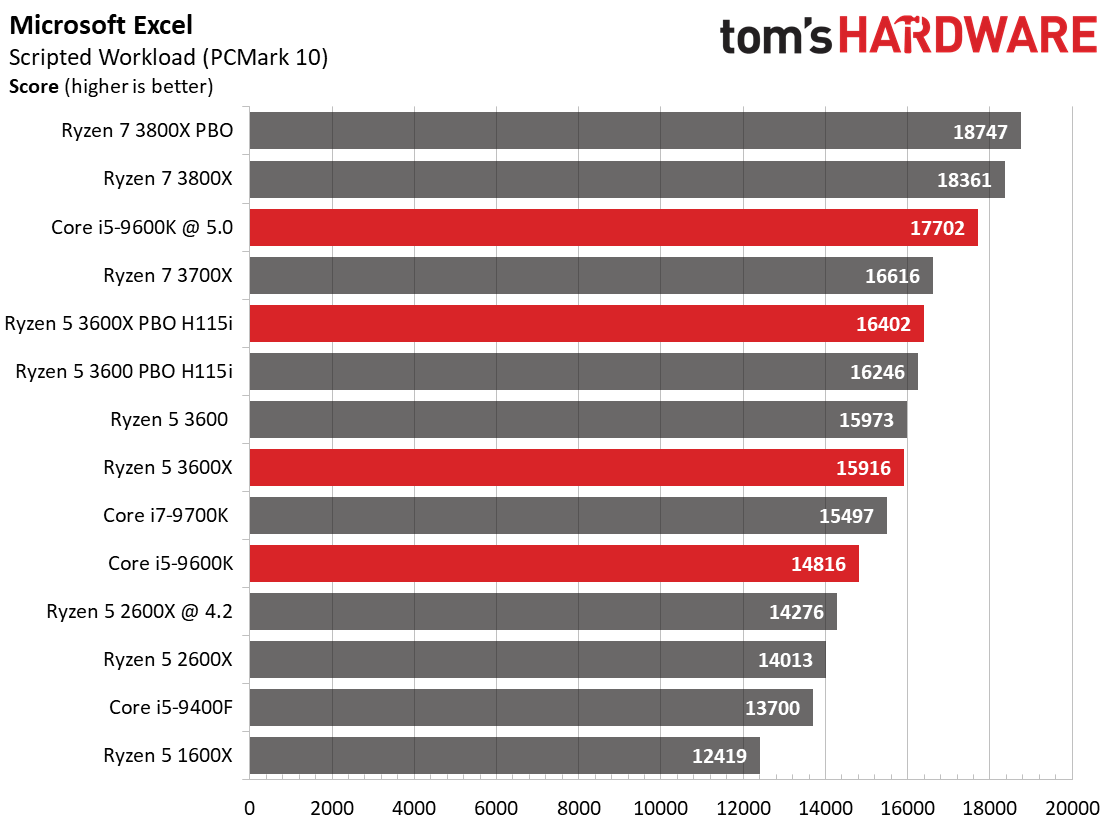
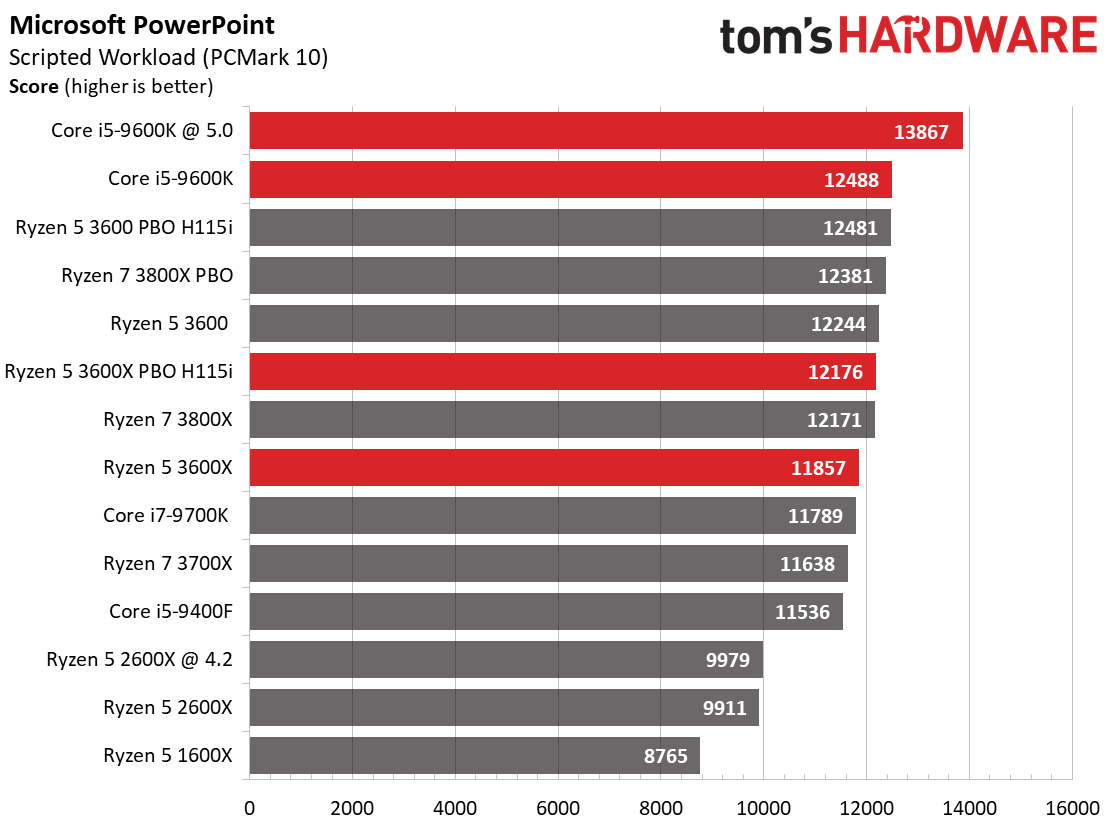
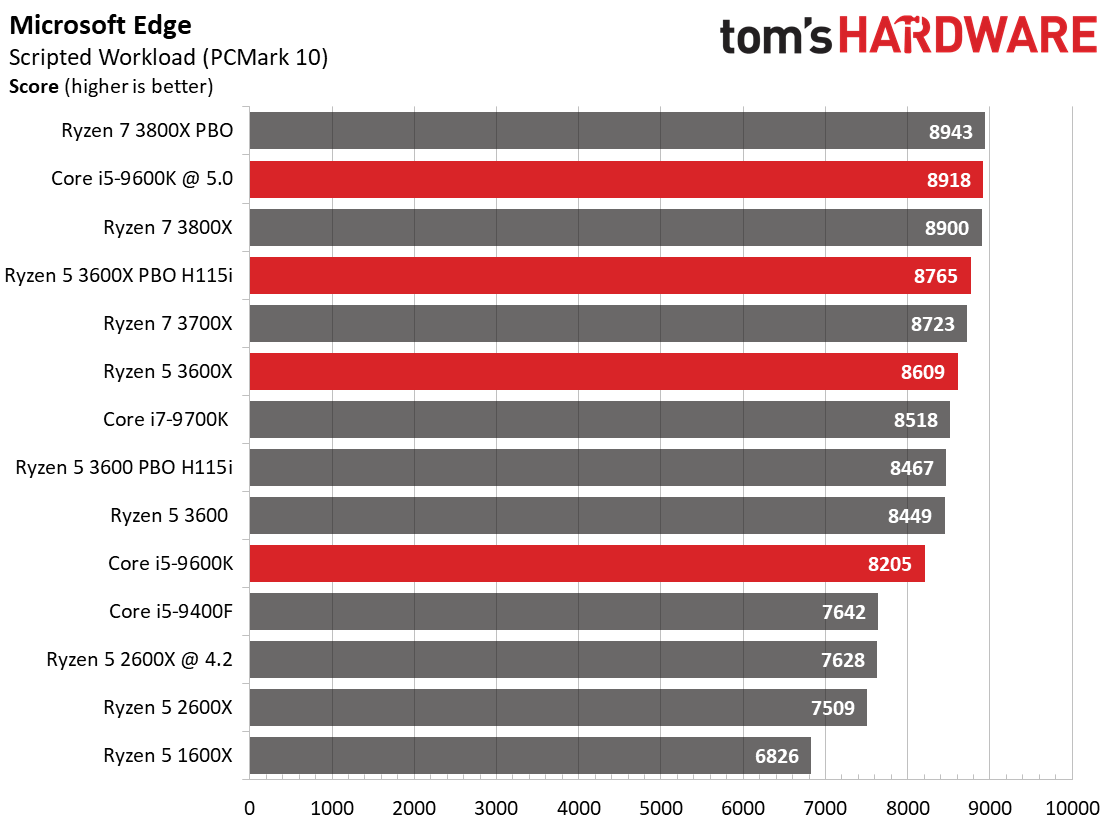
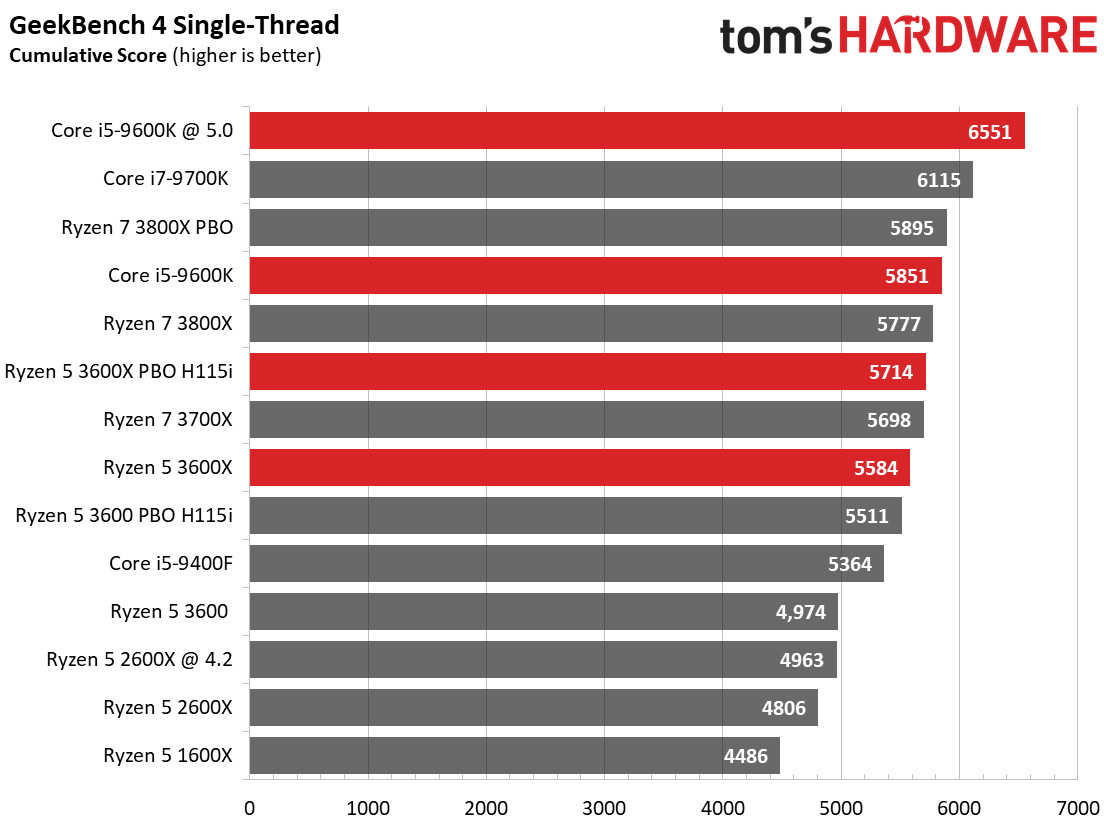
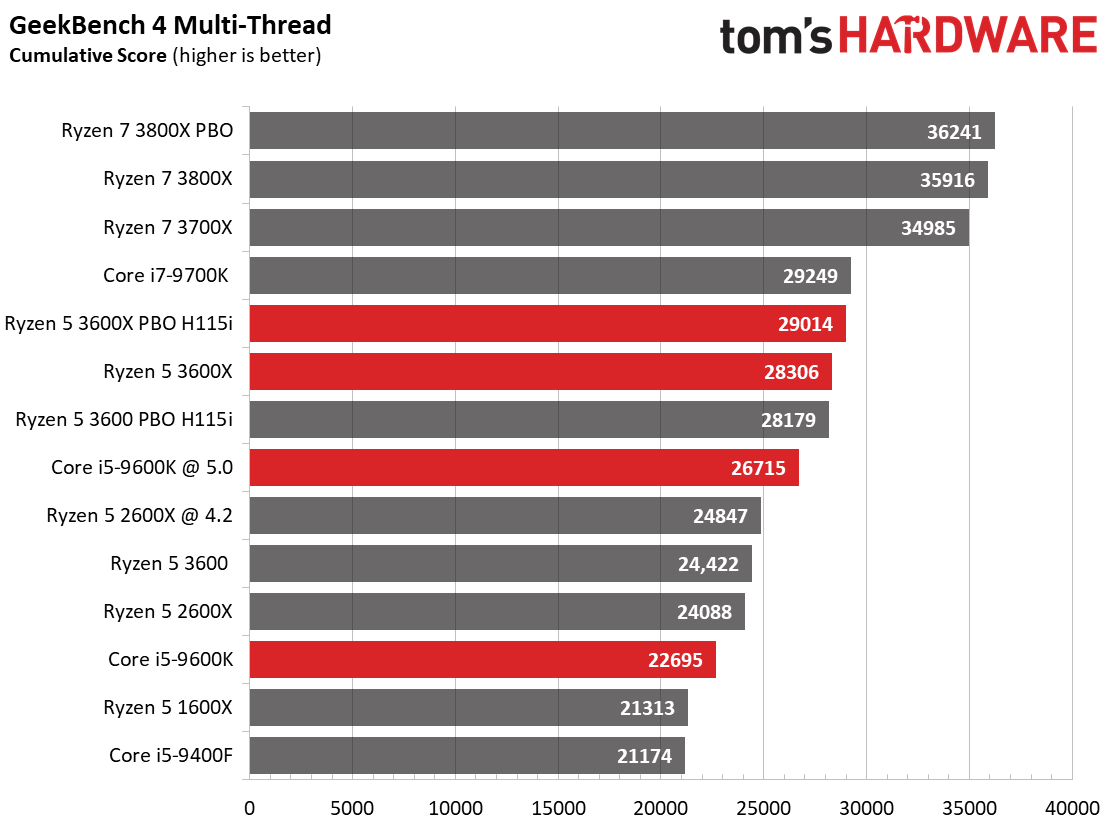
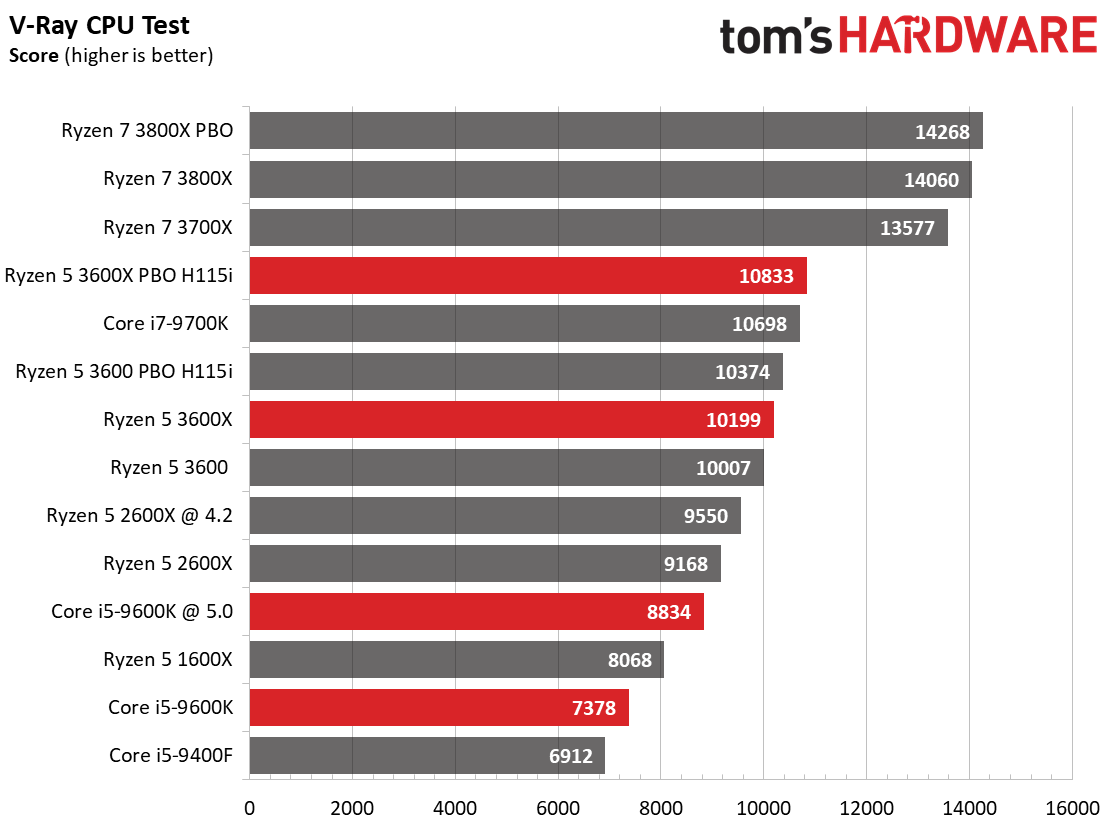
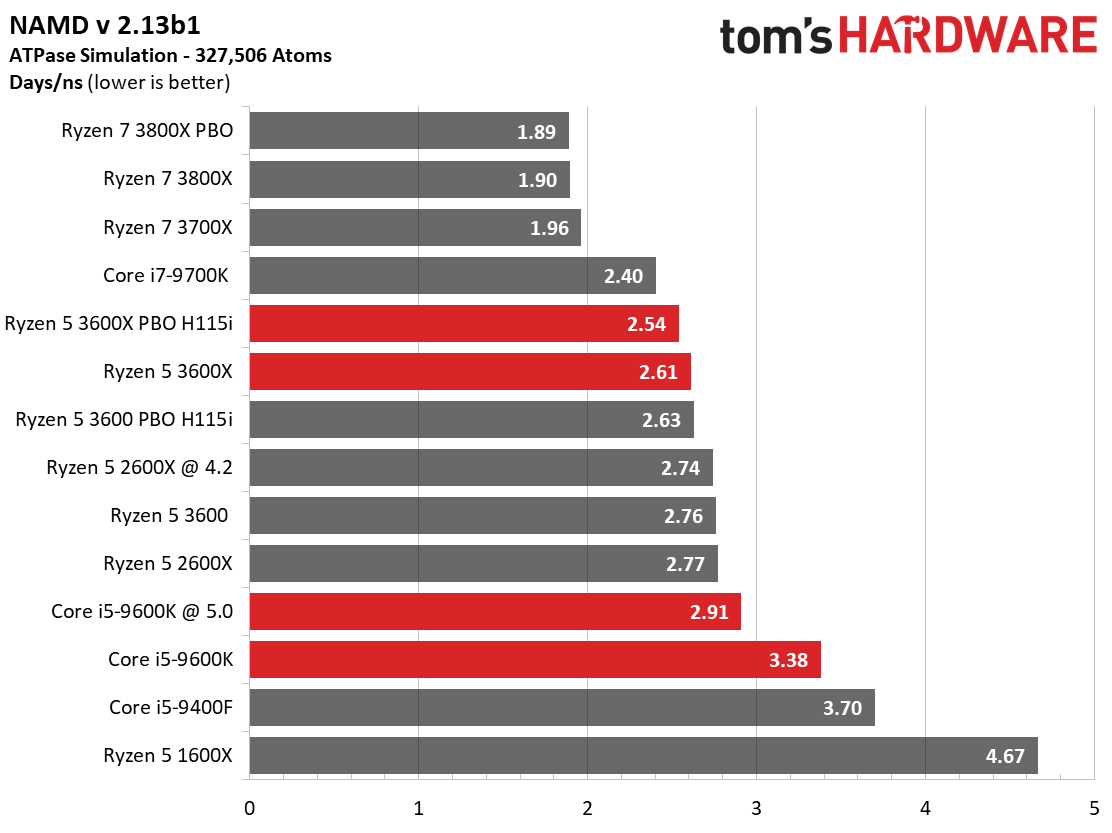
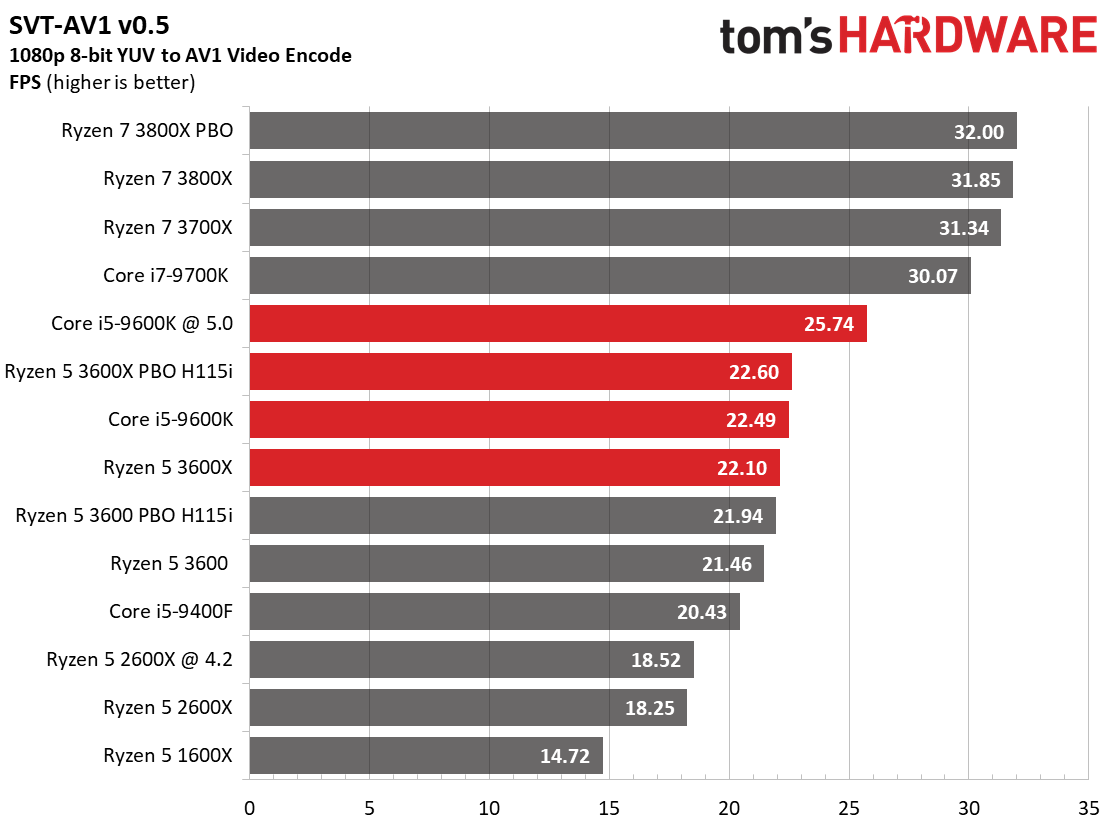
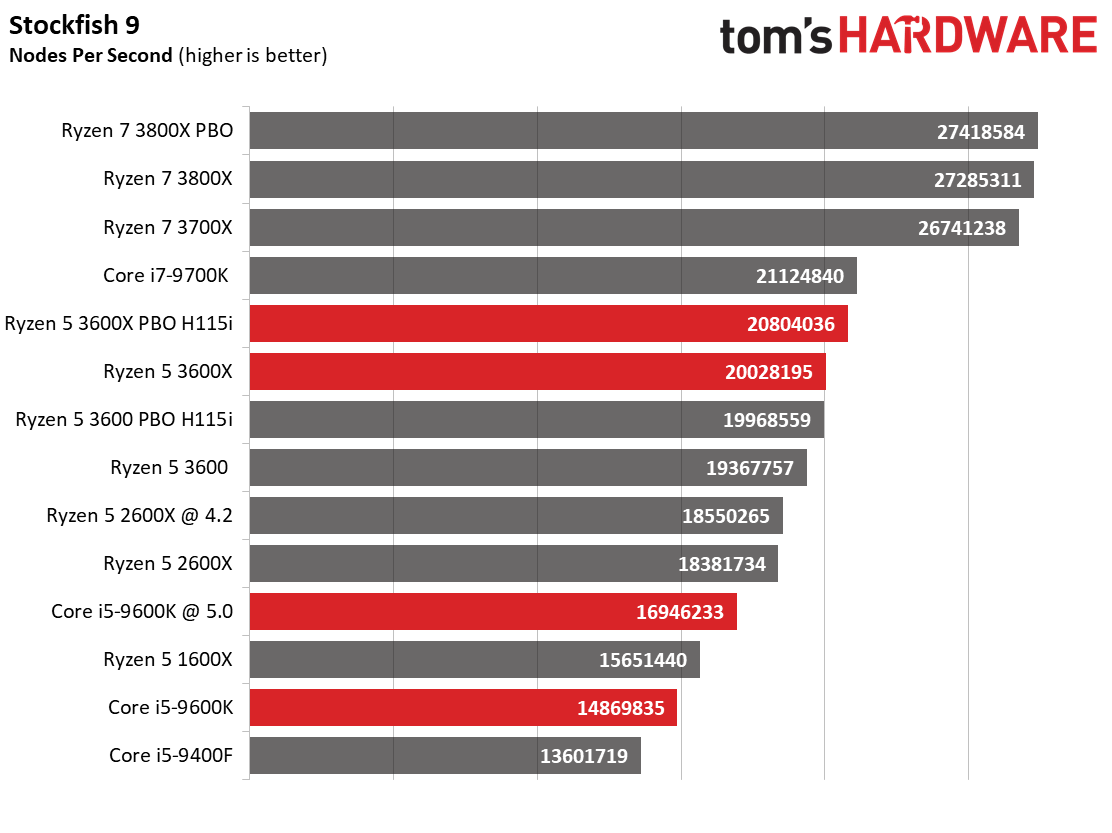
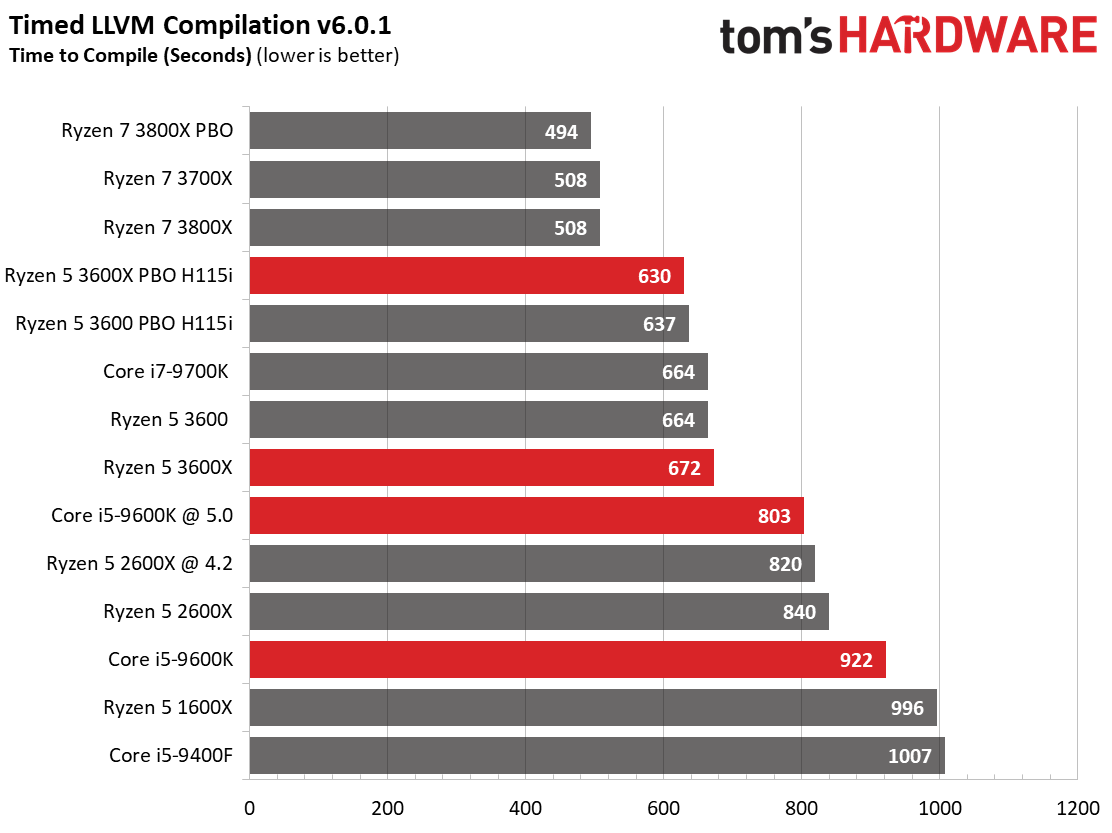
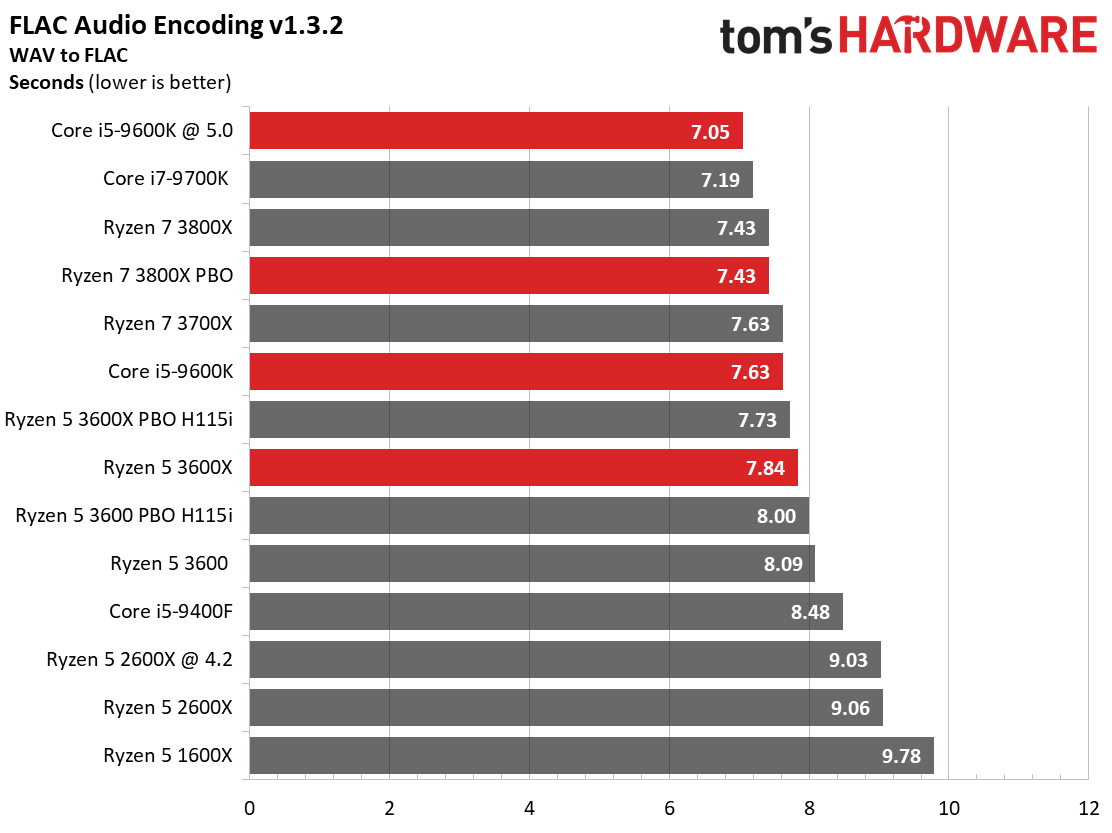
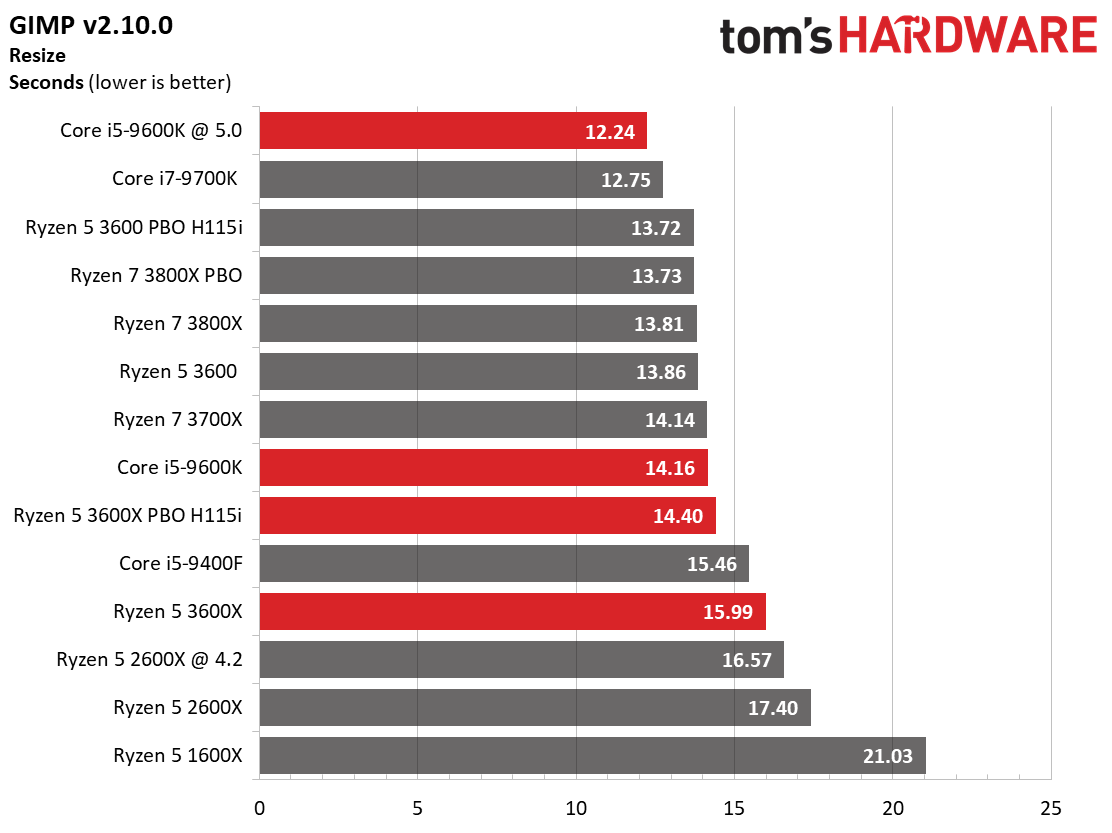
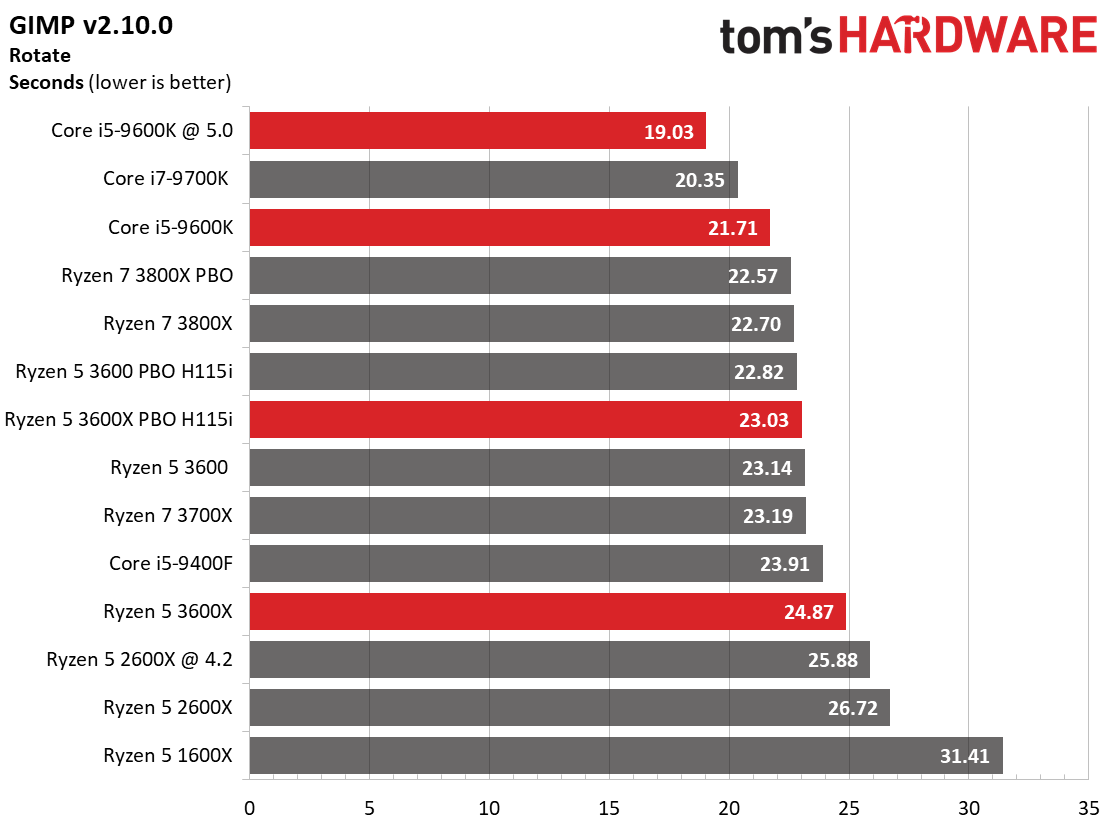
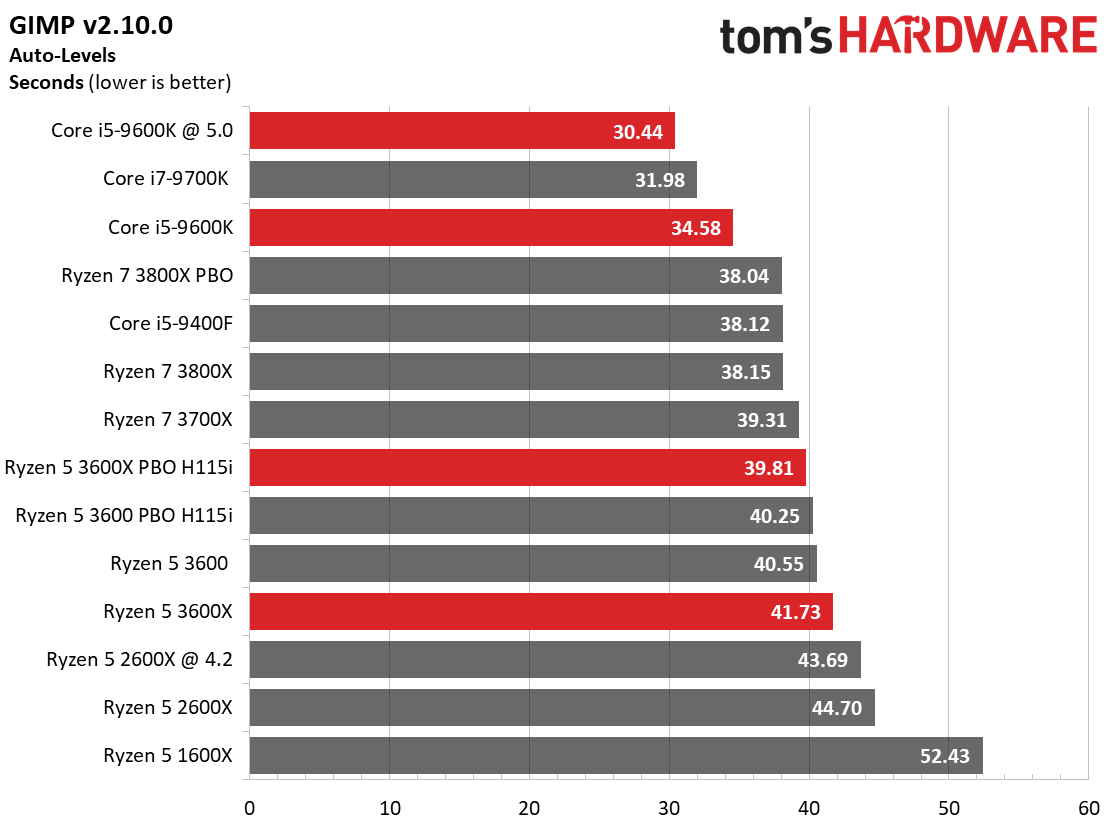
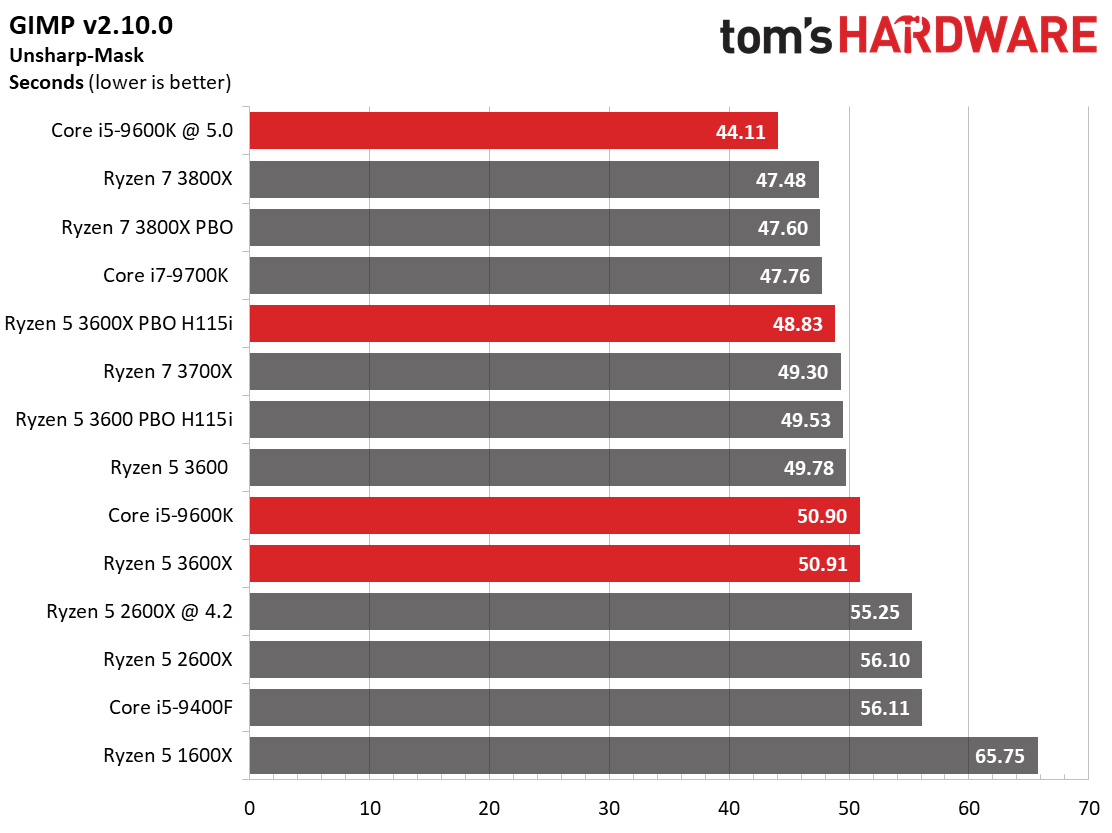
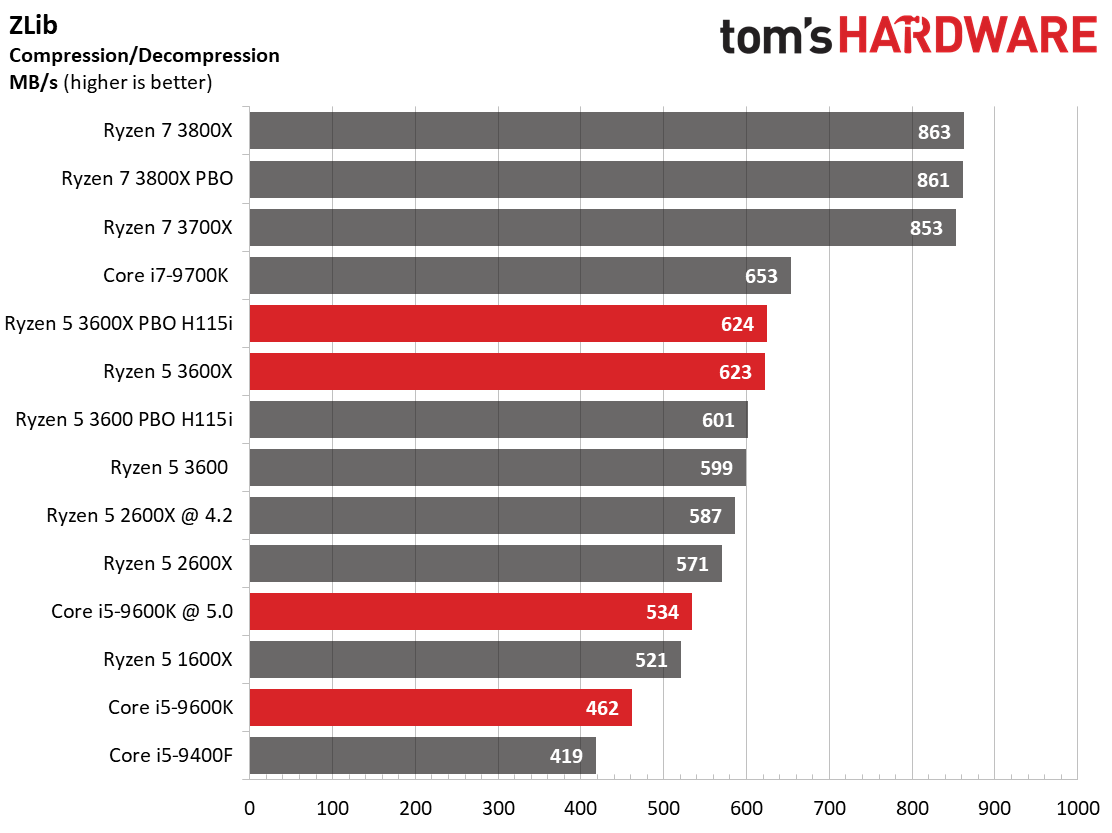
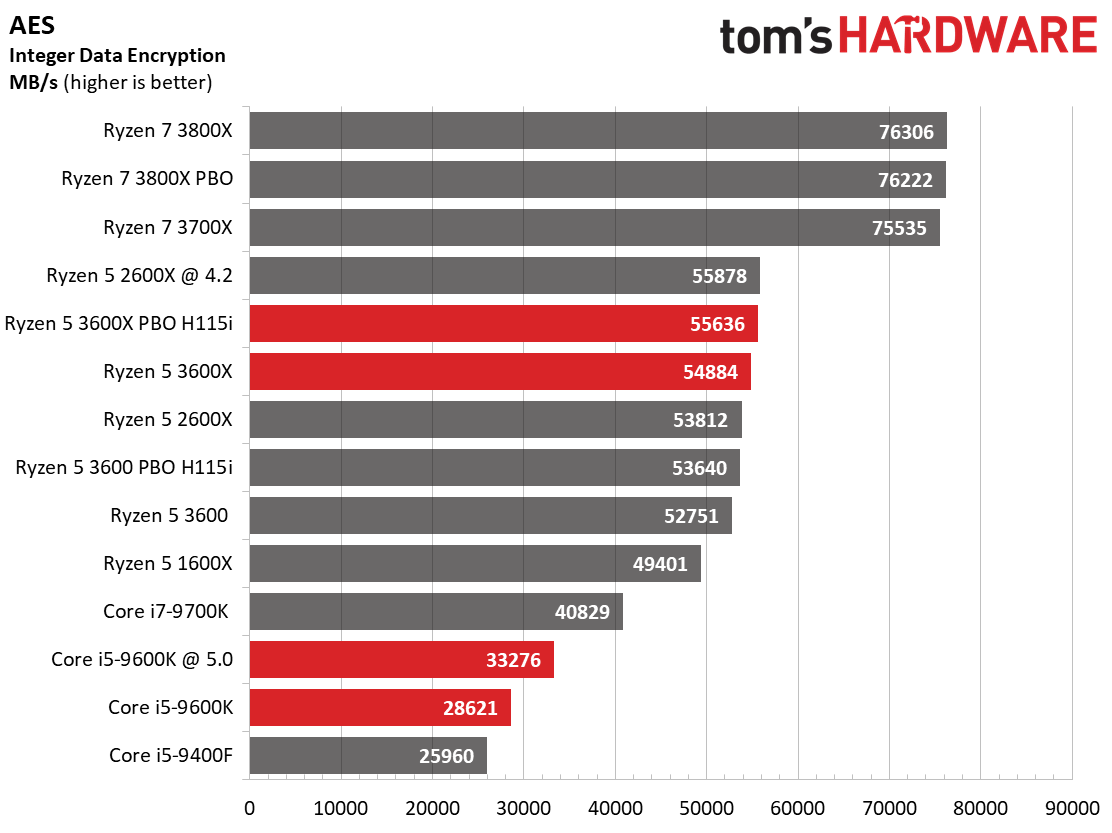
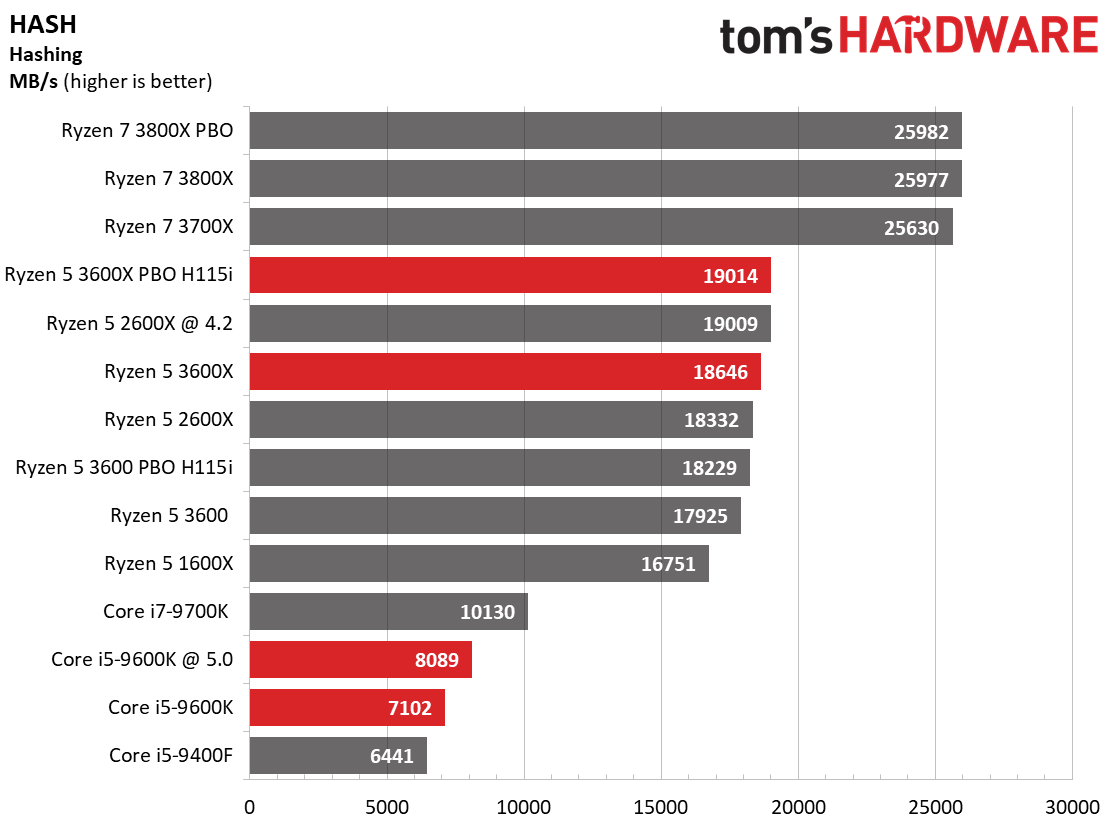
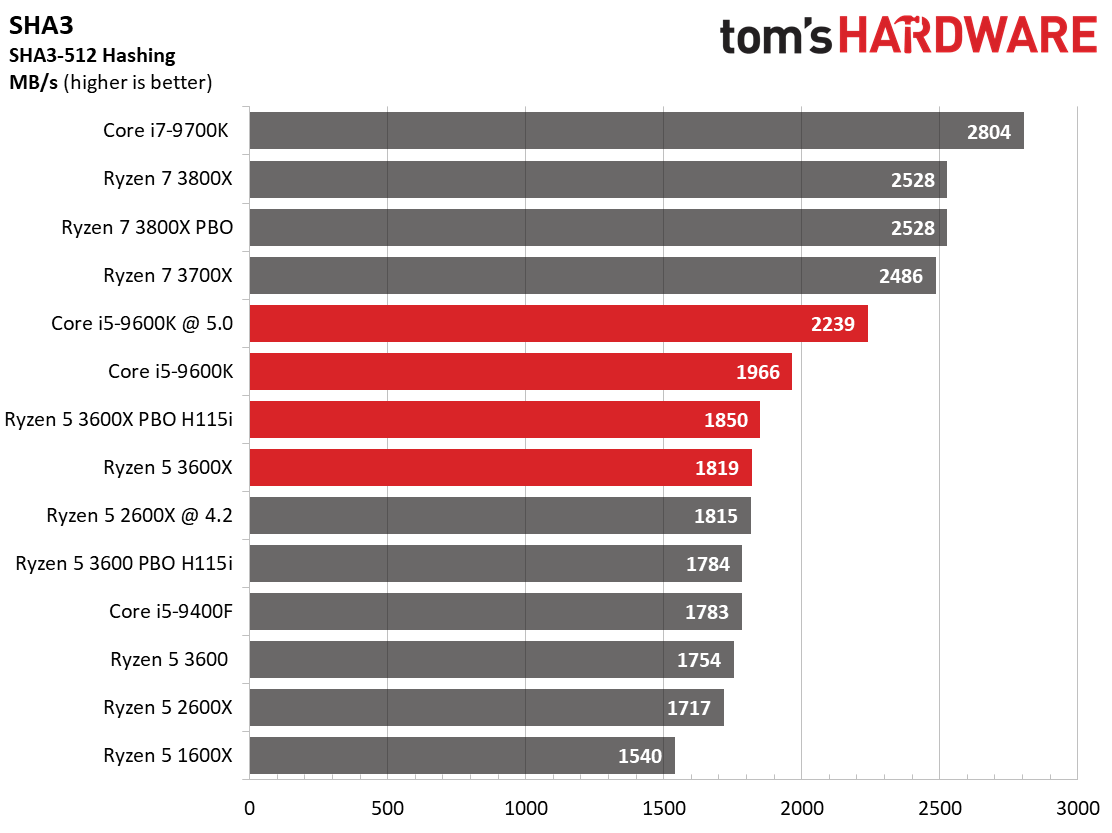
It wasn't a complete blowout for the Ryzen 5 3600X in the productivity tests. The Core i5-9600K managed to edge out the Ryzen chip in a few benchmarks, particularly in lightly-threaded applications. However, for the most part, the Ryzen 5 3600X beats the Core i5-9600K as a result of having twice the threads and a considerable amount of L3 cache.
The Core i5-9600K often catches the Ryzen 5 3600X when it is overclocked to 5 GHz on all its cores. On other occasions, even a 5 GHz overclock can't push the Core i5-9600K into striking range of the Ryzen 5 3600X.
Winner: AMD. If it wasn't obvious before, the Ryzen 5 3600X clearly packs more firepower than the Core i5-9600K when it comes to multi-threaded workloads. Intel does cling to its single-threaded advantage, but that isn't enough to offset the 3600X's better balance of performance in all workloads.
Value Proposition
| Header Cell - Column 0 | Price Per Core | Current Pricing (USD) | Cores / Threads | TDP (Watts) | Base / Boost Frequency (GHz) | L3 Cache (MB) | PCIe Lanes |
|---|---|---|---|---|---|---|---|
| Core i5-9600K | $27.50 | $219.99 | 6 / 6 | 95 | 3.7 / 4.6 | 9 | 16 x PCIe 3.0 |
| Ryzen 5 3600X | $26.39 | $211.15 | 6 / 12 | 95 | 3.8 / 4.4 | 32 | 16 x PCIe 4.0 |
| Ryzen 5 3600 | $21.87 | $174.99 | 6 / 12 | 65 | 3.6 / 4.2 | 32 | 16 x PCIe 4.0 |
You can find AMD's Ryzen 3000-series processors at ridiculously good pricing. The Ryzen 5 3600X is available for as low as $200, working out to ~$33 per core. Intel has recently slashed the prices on its processors to compete with AMD, but even after those cuts, the Core i5-9600K is still more expensive. The processor starts at $219.99, which comes out to ~$37 per core.
An X570 motherboard will set you back $145 at a minimum, while a Z370 or Z390 motherboard begins at $115. Of course, you'll have to factor in the cost of a CPU cooler with the Core i5-9600K, while the Ryzen 5 3600X comes with a capable Wraith Spire cooler that even grants some overclocking headroom.
Winner: AMD. The starting investment for both platforms is roughly the same. However, the Ryzen 5 3600X has more upside because you get access to the PCIe 4.0 feature to exploit the latest SSDs and graphics cards.
The Bottom Line
The Ryzen 5 3600X claims a one-two punch victory over the Core i5-9600K today. Obviously, it's not typical to see an AMD processor excel in both the gaming and productivity departments, but the Ryzen 5 3600X is the leader on both sides of the ball.
The Ryzen 5 3600X's six-core, 12-thread configuration is a success for AMD. The chip not only ushers in the PCIe 4.0 standard for consumers, it's also a better gaming and productivity chip than the Core i5-9600K. The only way for the Core i5-9600K to get into the conversation is if you need integrated graphics or you're interested in the highest overclocking potential. But getting a really good sample that can overclock beyond 5 GHz requires winning the silicon lottery.
The Ryzen 5 3600X is the only chip that's worth your consideration at the $200 price point, and the bundled cooler is a nice addition. Now all we need is for motherboard vendors to bring the more wallet-friendly 500-series motherboards to market. Once that happens, the price-to-performance ratio for the Ryzen 5 3600X will get even better.
Currently the only real competition for the 3600X comes from AMD's own stable. As you can see throughout our tests, after overclocking, the Ryzen 5 3600 offers slightly more performance than the stock 3600X, but trails when overclocking. Pricing for Ryzen chips fluctuates wildly, but currently both chips retail for the same price. However, opting for a 3600 often equates to a savings if you aren't interested in that last bit of overclocking performance with the Ryzen 5 3600X, so keep that in mind at checkout.
Overall Winner: AMD
Rounds
| Intel Core i5-9600K | AMD Ryzen 5 3600X | |
|---|---|---|
| Features | Row 0 - Cell 1 | ✗ |
| Motherboard Options | Row 1 - Cell 1 | ✗ |
| Overclocking Potential | ✗ | Row 2 - Cell 2 |
| Cooling Solutions | Row 3 - Cell 1 | ✗ |
| Gaming | Row 4 - Cell 1 | ✗ |
| Productivity Performance | Row 5 - Cell 1 | ✗ |
| Value Proposition | Row 6 - Cell 1 | ✗ |
| Total | 1 | 6 |
Test System and Configuration
| Header Cell - Column 0 | Components |
|---|---|
| AMD Socket AM4 (X570) | AMD Ryzen 9 3900X, Ryzen 7 3800X, Ryzen 7 3700X, Ryzen 5 3600X, Ryzen 5 3600, Ryzen 7 2700X, Ryzen 5 2600X |
| Row 1 - Cell 0 | MSI MEG X570 Godlike |
| Row 2 - Cell 0 | 2x 8GB G.Skill Flare DDR4-3200Ryzen 3000 - DDR4-3200, DDR4-3600 |
| Row 3 - Cell 0 | Second-gen Ryzen - DDR4-2933, DDR4-3466 |
| Intel LGA 1151 (Z390) | Intel Core i7-9700K, Core i5-9600K. Core i5-9400F |
| Row 5 - Cell 0 | MSI MEG Z390 Godlike |
| Row 6 - Cell 0 | 2x 8GB G.Skill FlareX DDR4-3200 @ DDR4-2667 & DDR4-3466 |
| AMD Socket AM4 (X470) | AMD Ryzen 5 1600X |
| Row 8 - Cell 0 | MSI X470 Gaming M7 AC |
| Row 9 - Cell 0 | 2x 8GB G.Skill FlareX DDR4-3200 @ DDR4-2933 |
| All Systems | Nvidia GeForce RTX 2080 Ti |
| Row 11 - Cell 0 | 2TB Intel DC4510 SSD |
| Row 12 - Cell 0 | EVGA Supernova 1600 T2, 1600W |
| Row 13 - Cell 0 | Windows 10 Pro (1903 - All Updates) |
| Cooling | Corsair H115i - Stock and OC cooler except where noted in charts |
| Row 15 - Cell 0 | Custom Loop, EKWB Supremacy EVO waterblock, Dual-720mm radiators (HEDT only - n/a here) |
| Row 16 - Cell 0 | AMD Wraith Spire, as noted |
MORE: Best CPUs
MORE: CPU Benchmarks Hierarchy
MORE: All CPUs Content

Zhiye Liu is a news editor, memory reviewer, and SSD tester at Tom’s Hardware. Although he loves everything that’s hardware, he has a soft spot for CPUs, GPUs, and RAM.
-
King_V ReplyHowever, opting for a 3600X often equates to a savings if you aren't interested in that last bit of overclocking performance with the Ryzen 5 3600X, so keep that in mind at checkout.
Is that one supposed to be 3600 (non-X)? The wording here is a bit strange.
That said, I'll admit that being better overall in gaming and productivity, well, I did NOT see that coming. I suspect there will be protests from the Intel side about overclocking about this. -
Paul Alcorn Reply
Thanks for the heads up, will fix :)King_V said:Is that one supposed to be 3600 (non-X)? The wording here is a bit strange.
That said, I'll admit that being better overall in gaming and productivity, well, I did NOT see that coming. I suspect there will be protests from the Intel side about overclocking about this. -
sizzling Gaming benchmarks without 0.1% % 1.0% are only half the picture especially when comparing these 2 cpu'sReply -
philged AMD has made a fantastic set of processors for a great value , but from a purely gaming perspective this article seems a little off.Reply
Most of the reviews from Toms itself and other sites have put the i5-9600k clearly above AMD's set of offerings when you just look at gaming.
The article seems to try and skew some of those results incorrectly in favor of AMD.
The biggest issue, running a straight up average, or even a geometric average (as used by the article) Intel wins in the overall test suite. AMD's numbers are properly reported, but for some reason the Intel ones are lower than they should be. In the overall average, AMD is reported at 119.4 (actual is 119.4588) but Intel is reported at 118.3 (actual is 120.0273, meaning Intel wins, completely changing the result)
Looking at the individual test results, the article claims AMD wins 6/10 test suites (again, differing from previous results) but in reality, AMD wins 4 tests, and ties in 3 more where the results between the 99th and average are mixed.
Additionally, because the AoTS run is a CPU test, not a real-world gaming result, taking out that result lands Intel even higher on the overall test suite averages and makes it an even tie on individual game wins.
Again, AMD is great, but from a gaming perspective, something is wrong with your results. -
TJ Hooker Reply
They do have 1% (listed as 99%) FPS results.sizzling said:Gaming benchmarks without 0.1% % 1.0% are only half the picture especially when comparing these 2 cpu's -
TJ Hooker Reply
I got 118.3 fps (118.2613) for the 9600K geomean average FPS. You probably just made a typo during your calculations.philged said:In the overall average, AMD is reported at 119.4 (actual is 119.4588) but Intel is reported at 118.3 (actual is 120.0273, meaning Intel wins, completely changing the result)
If the 3600(X) performs a bit better than it did when it first came out that's not really surprising. There have a been a bunch of BIOS updates with performance/boost tweaks that have come out since then.philged said:Looking at the individual test results, the article claims AMD wins 6/10 test suites (again, differing from previous results) -
iam2thecrowe Seems like the real winner is the 3600 non-X. Basically same performance for $50 less.Reply -
Paul Alcorn Replyphilged said:AMD has made a fantastic set of processors for a great value , but from a purely gaming perspective this article seems a little off.
Most of the reviews from Toms itself and other sites have put the i5-9600k clearly above AMD's set of offerings when you just look at gaming.
The article seems to try and skew some of those results incorrectly in favor of AMD.
The biggest issue, running a straight up average, or even a geometric average (as used by the article) Intel wins in the overall test suite. AMD's numbers are properly reported, but for some reason the Intel ones are lower than they should be. In the overall average, AMD is reported at 119.4 (actual is 119.4588) but Intel is reported at 118.3 (actual is 120.0273, meaning Intel wins, completely changing the result)
Looking at the individual test results, the article claims AMD wins 6/10 test suites (again, differing from previous results) but in reality, AMD wins 4 tests, and ties in 3 more where the results between the 99th and average are mixed.
Additionally, because the AoTS run is a CPU test, not a real-world gaming result, taking out that result lands Intel even higher on the overall test suite averages and makes it an even tie on individual game wins.
Again, AMD is great, but from a gaming perspective, something is wrong with your results.
Thanks for the feedback. I went back and double-checked, and it appears our numbers are accurate. The problem partially stems from the fact that we have more detailed data that we round off for the charts for each title. For instance, the 3600X's average frame rate for Hitman 2 is 98.40134 (we calculate this from measurements of every single frame presented), but for obvious reasons we don't include the full number in the chart, instead rounding off. However, we calculate our overall geometric mean based off of the more granular data. In either case, I'm not able to replicate your math for the 9600k based off the data presented, so might be a miskey there.
We use a geometric mean to reduce the impact of any massive deltas in a given title that aren't represented elsewhere. That smoothing effect is widely used for these types of cumulative measurements, and it does reduce the impact of the Ashes test you mention. Removing ashes from the test roster takes the 9600K from a -1.1834 fps loss to a 0.7856 fps lead, an overall swing of 1.969 fps. However, replacing that test with another would cause a comparable swing based upon title chosen. At the end of the day, it is all about the mix, and merely swapping one out for another impacts cumulative results as well. The Ashes test is CPU-centric, but this is a CPU review, after all, and we're measuring the CPUs ability to issue draw calls while under heavy load.
Please remember that we're dealing with small variances here when discussing 3600X to 9600K, and the overall impression we have is that there is little differentiation between the two, especially with lesser cards/higher resolutions. Cumulative results make the overall picture easier to digest for casual readers, but they certainly aren't the end-all-be-all for performance. We provide the detailed per-game charts to allow readers to get a gauge of performance in games that best represent what they're playing, so keep that in mind.
AMD does pull off the slightest of wins here, so we have to call that out lest we be accused of not calling out a win. I will say it is a bit refreshing that someone thinks we're skewing in favor of AMD, as most of the time people suspect we do that for Intel :p -
RodroX At 1080p Intel core i5 9600K still give you higher AVG FPS in some older games and even in some newer ones when OC. But once you take a close look to the 1% and 0.1%low in games like RDR 2, you understand why a R5 3600 (the non-X one) is a better idea than a i5 9600K or 9700K even when you overclock them.Reply
At 1440p, the story change a bit, but in a way that wont help intel too much either, since the numbers tend to be more close to each other cause of the bigger GPU load. -
TJ Hooker Reply
In the case of RDR2 there's clearly some issue affecting non-multithreaded CPUs, that goes beyond simply not having enough cores/threads. In Gamernexus' benchmarks the 7700K has massively better 1% and 0.1% FPS than a 9700K. That makes no sense, a 4C/8T CPU should obviously not be outperforming a 8C/8T CPU.RodroX said:But once you take a close look to the 1% and 0.1%low in games like RDR 2, you understand why a R5 3600 (the non-X one) is a better idea than a i5 9600K or 9700K even when you overclock them.
I guess you could still argue that it's a 'win' for AMD as all their (non-APU) chips are multithreaded, but I don't know if I'd use it as evidence that 6 threads are no longer enough for gaming.
z_ty-gajwoA:422View: https://youtu.be/z_ty-gajwoA?t=422
